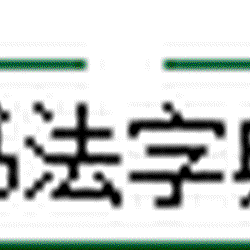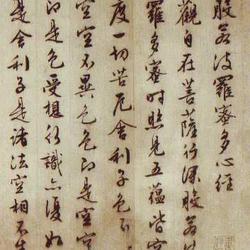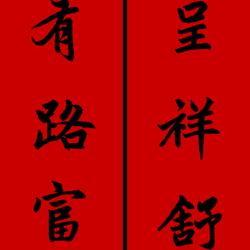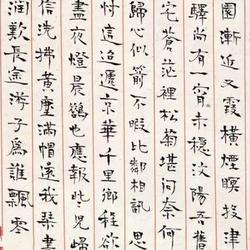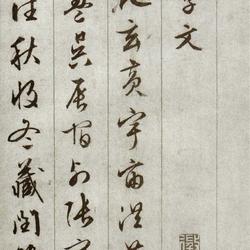Orchid Pavilion Eight Pillars
The first pillar is engraved with a copy by Yu Shinan, a calligrapher in the early Tang Dynasty; the second pillar is engraved with a copy by Chu Suiliang; the third pillar is engraved with a copy by Feng Chengsu; the fourth pillar is engraved with a copy. What is engraved is the original "Lanting Poetry" written by Liu Zongyuan, a famous litterateur in the Tang Dynasty; the fifth pillar is engraved on the original "Lanting Poetry" written by Liu Gongquan, a famous calligrapher of the Tang Dynasty; and the sixth pillar is engraved by the Qianlong Jinshi of the Qing Dynasty. Yu Minzhong repaired the Lanting Que pen written by Liu Gongquan; the seventh pillar was engraved with the "Lanting Poems" written by Ming calligrapher Dong Qichang in imitation of Liu Gongquan; the eighth pillar was engraved with Emperor Qianlong's copy of Dong Qichang's imitation of Liu Gongquan's "Lanting Poems" written by the poet.
The eight pillars of the Orchid Pavilion and the Orchid Pavilion Stele are the old relics of the "Sitting on a Stone and Facing the Stream" pavilion in the Old Summer Palace. Today they are an important part of the "Scenery is Created from Heaven" Pavilion in Zhongshan Park.
[Yu Shinan, the first of the eight pillars in the Lanting Preface]
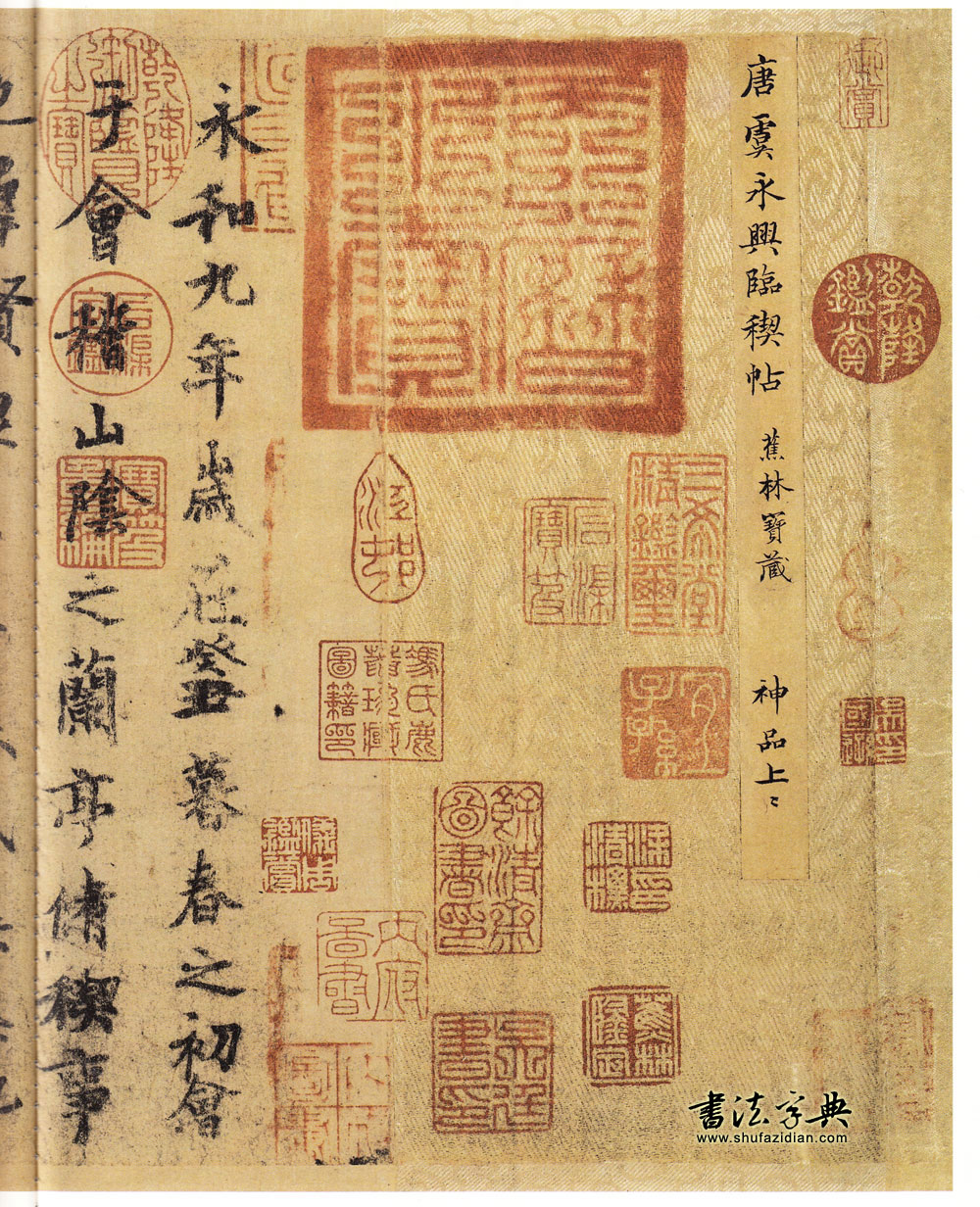
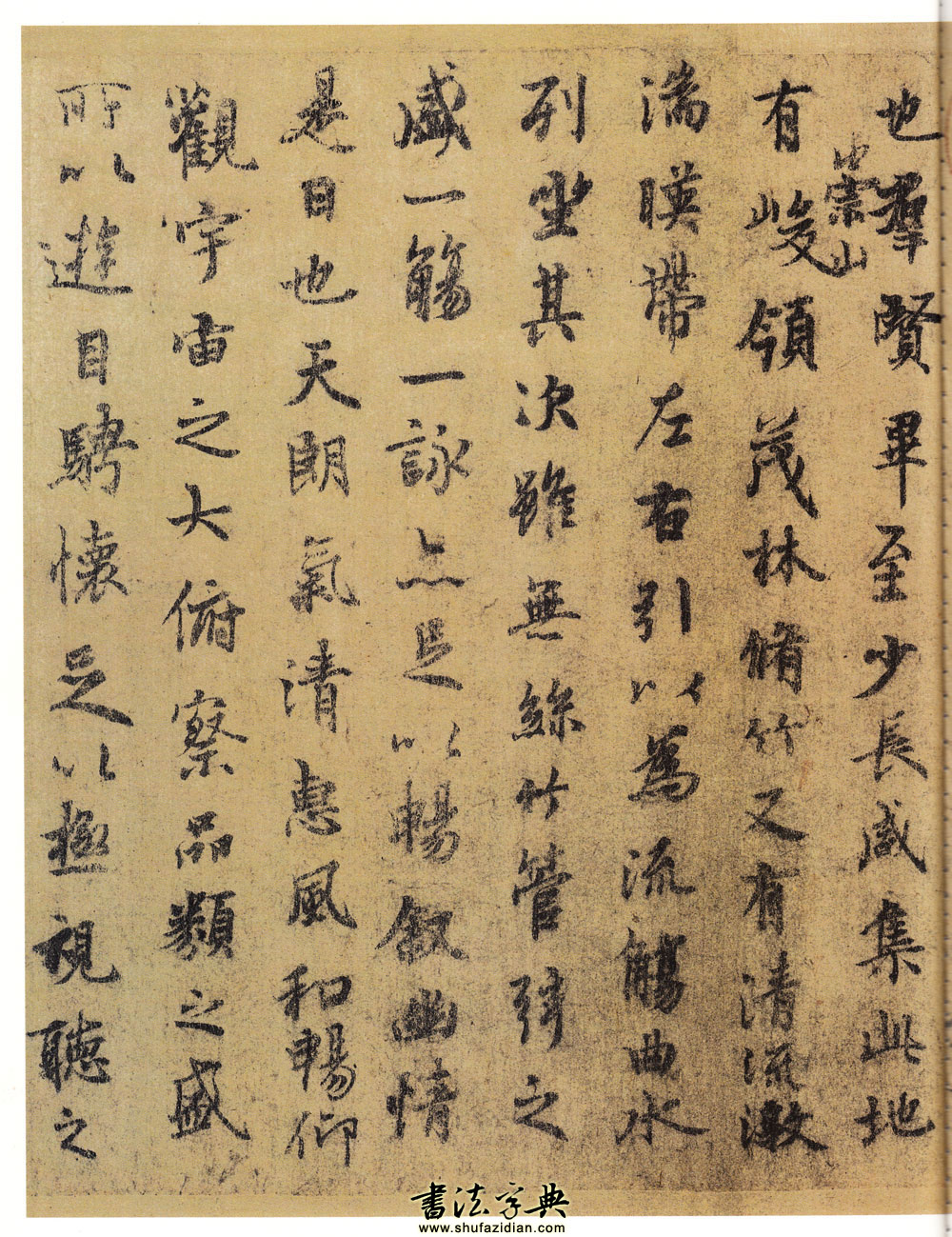
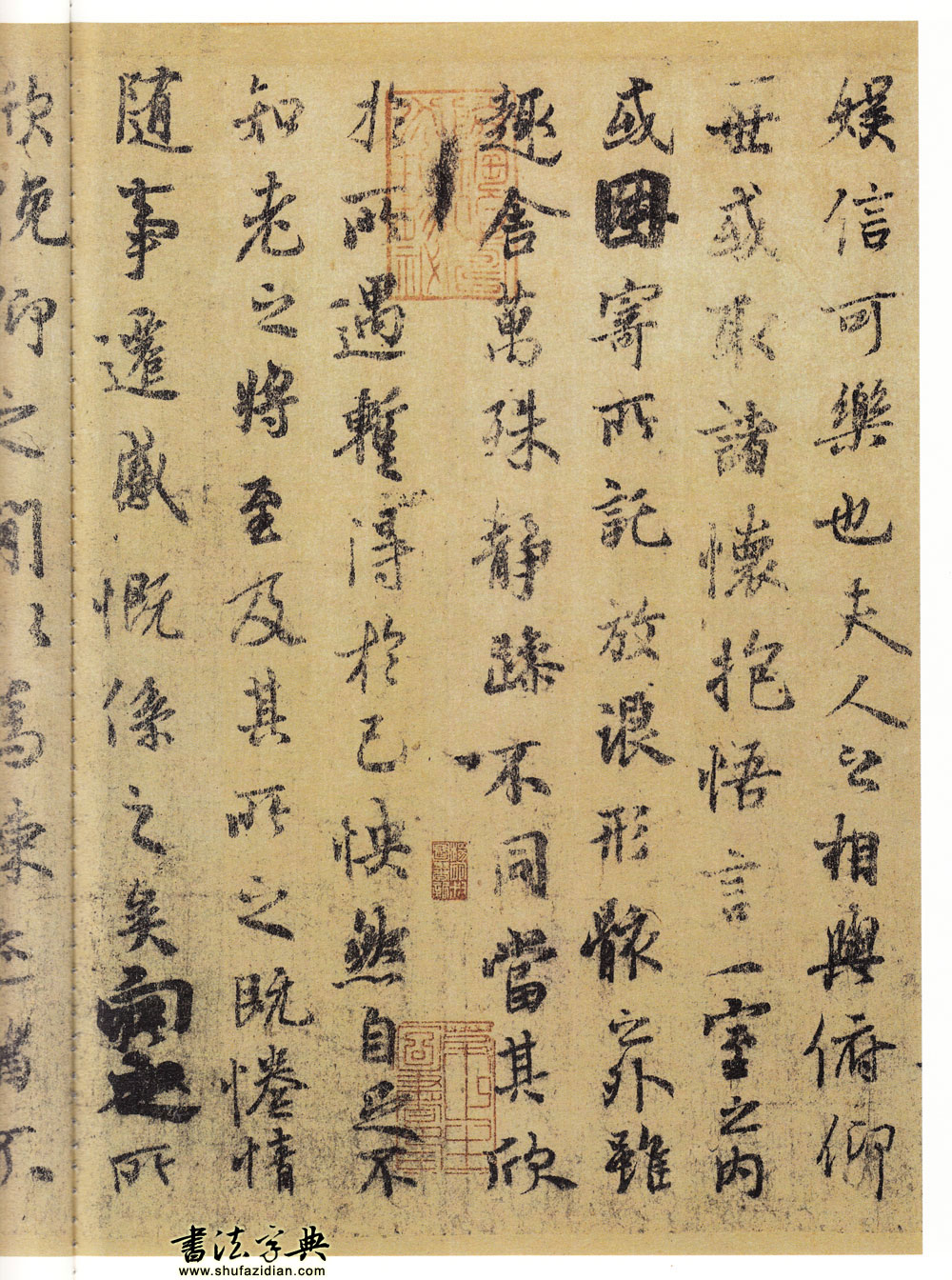
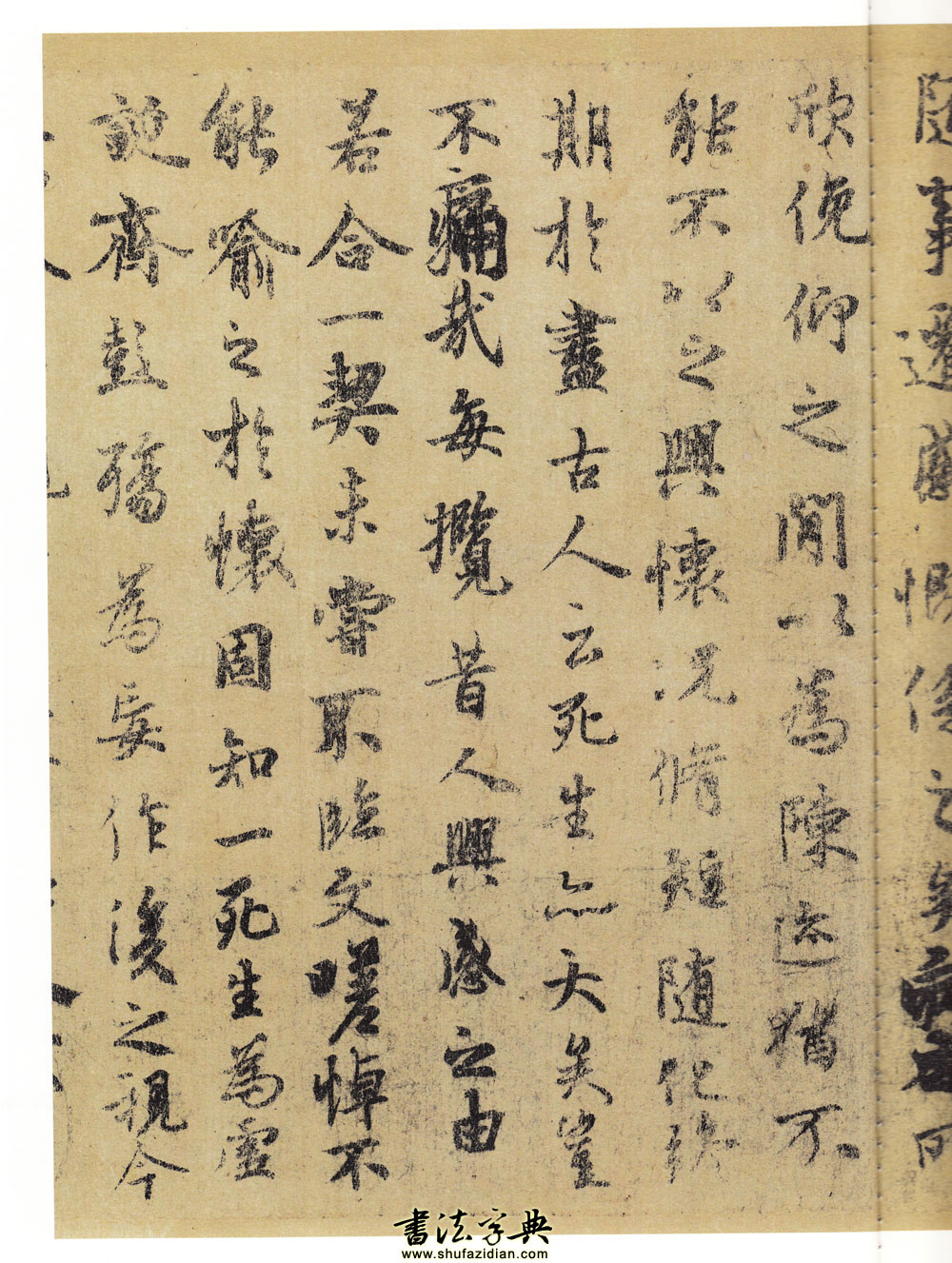
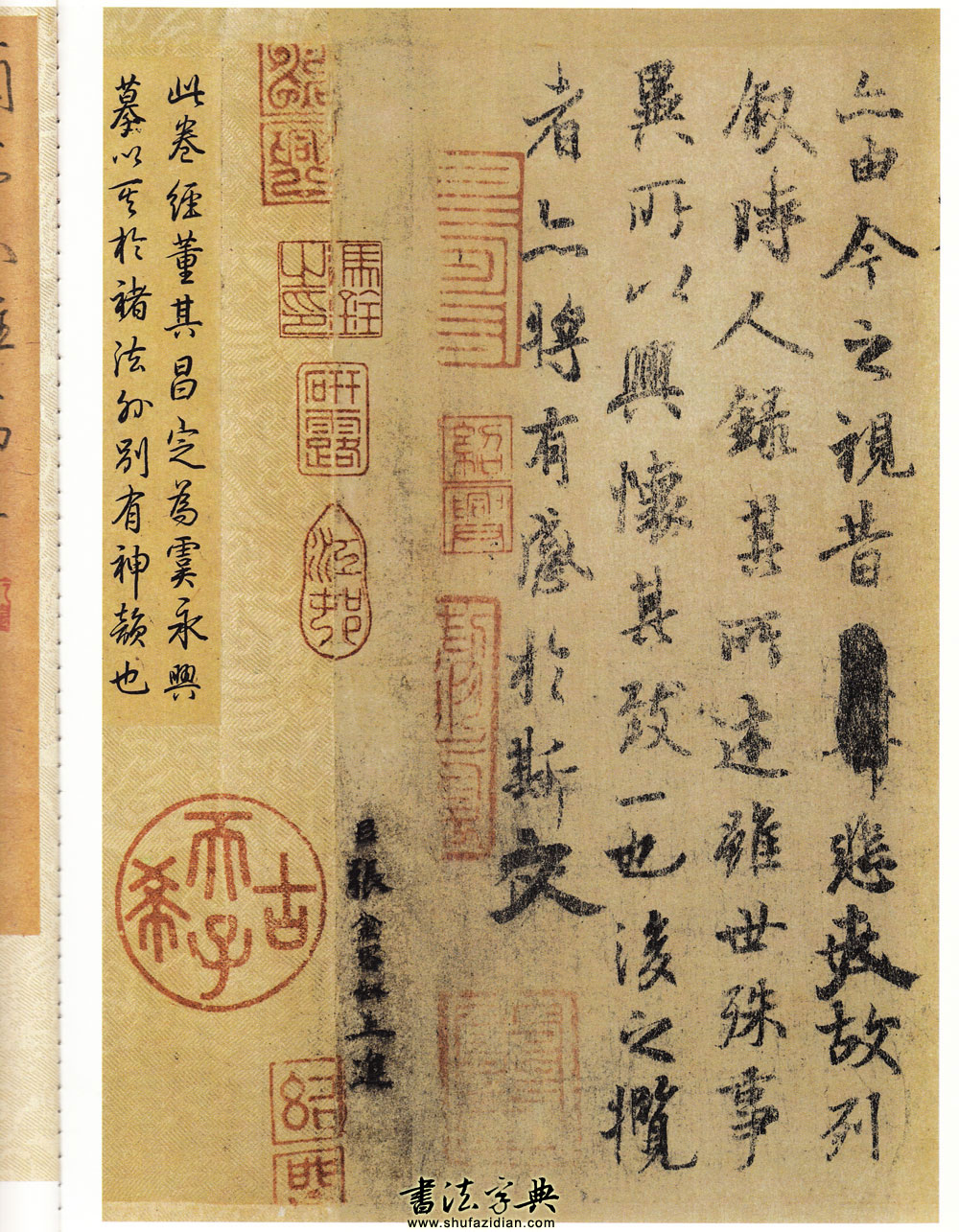
[Chu Suiliang, the second of eight columns in the Lanting Preface]
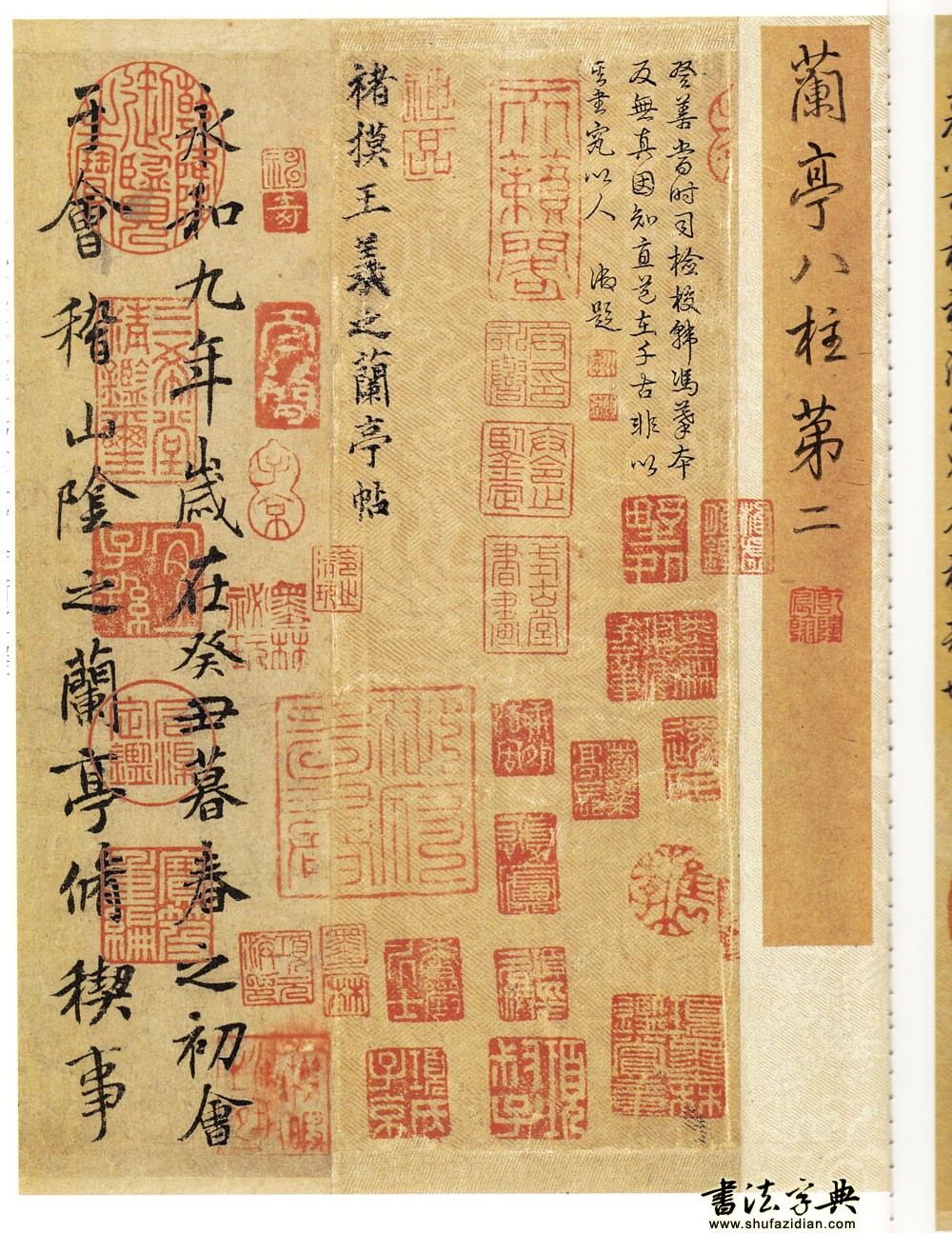
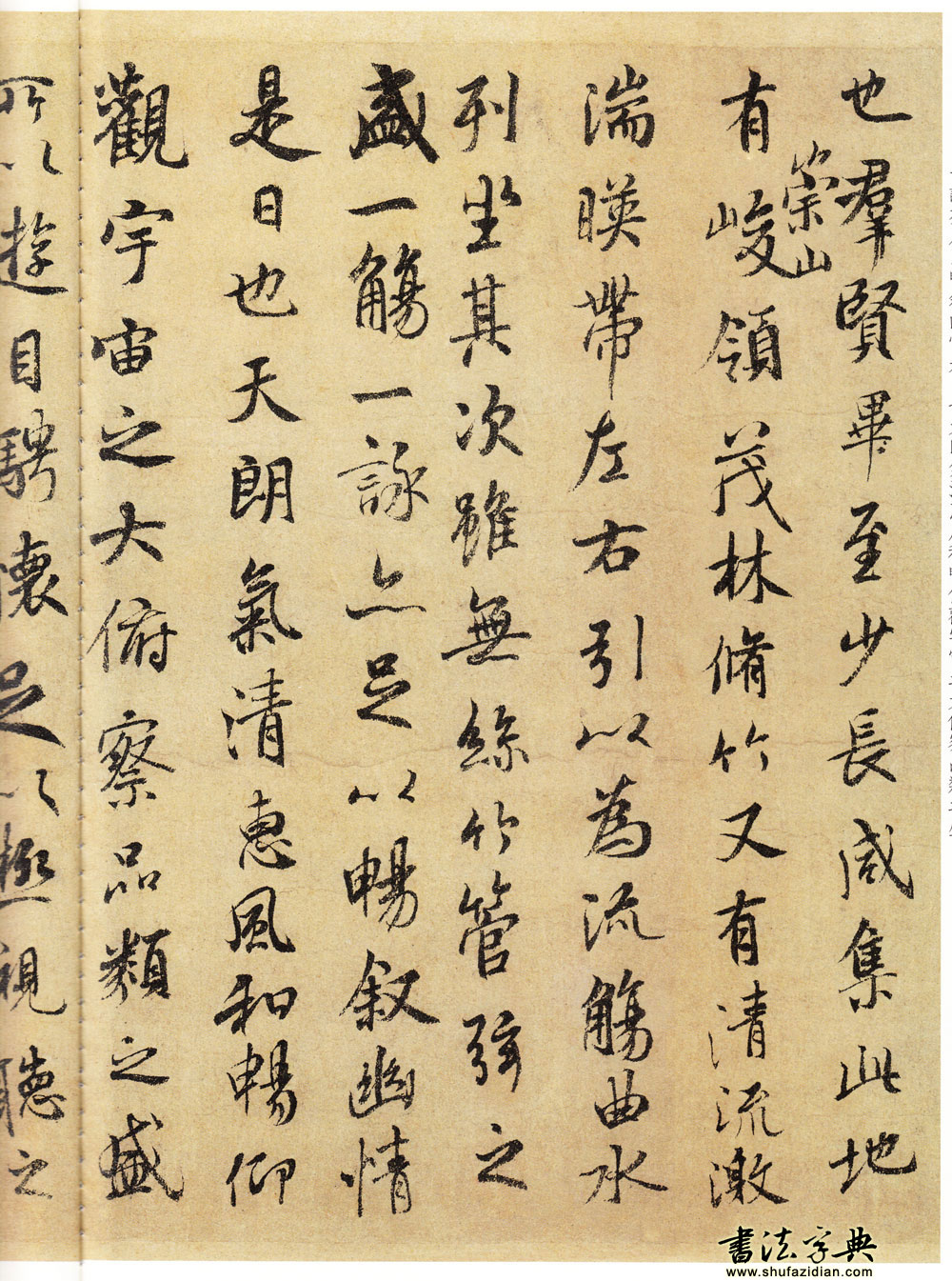
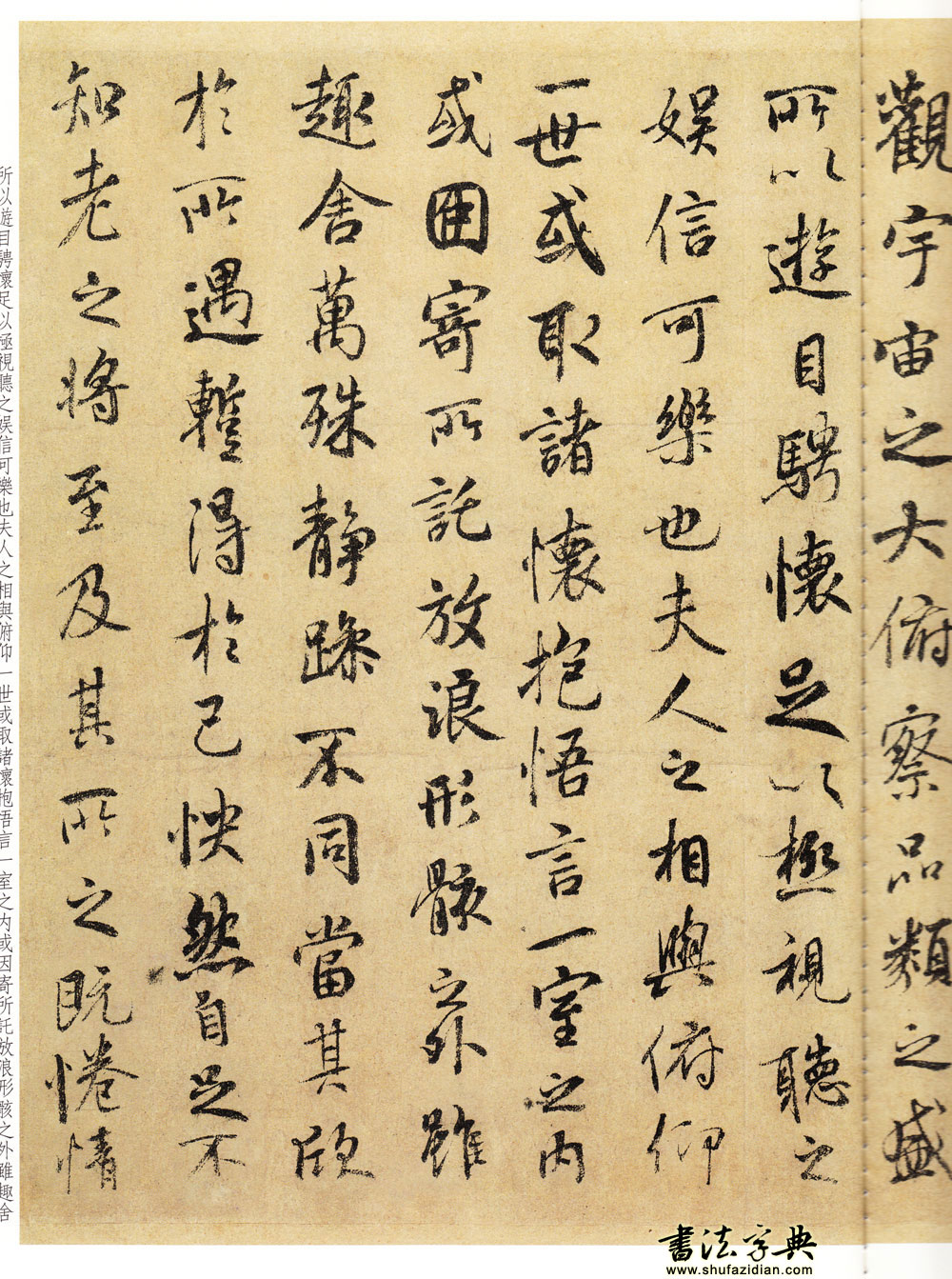
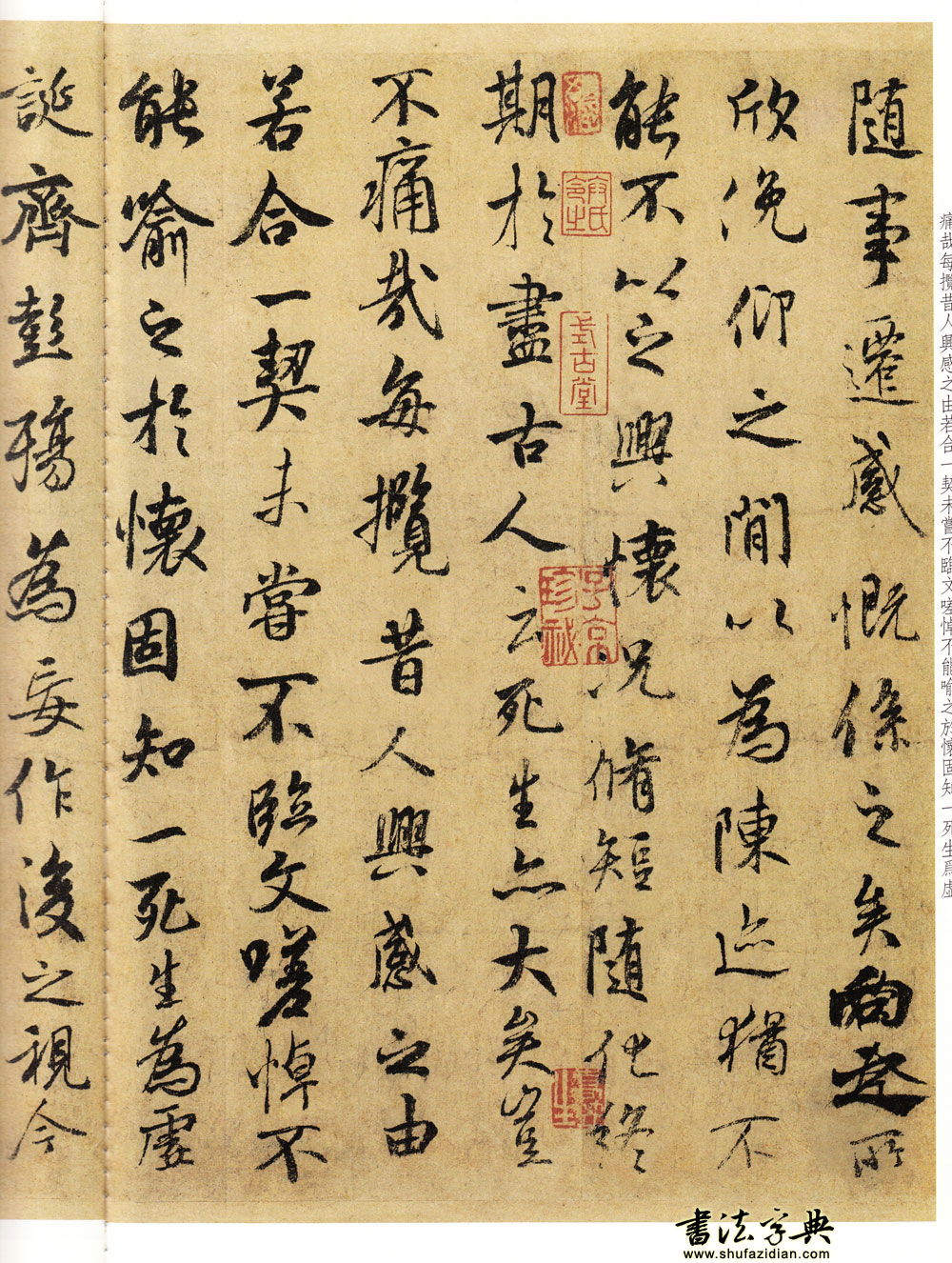
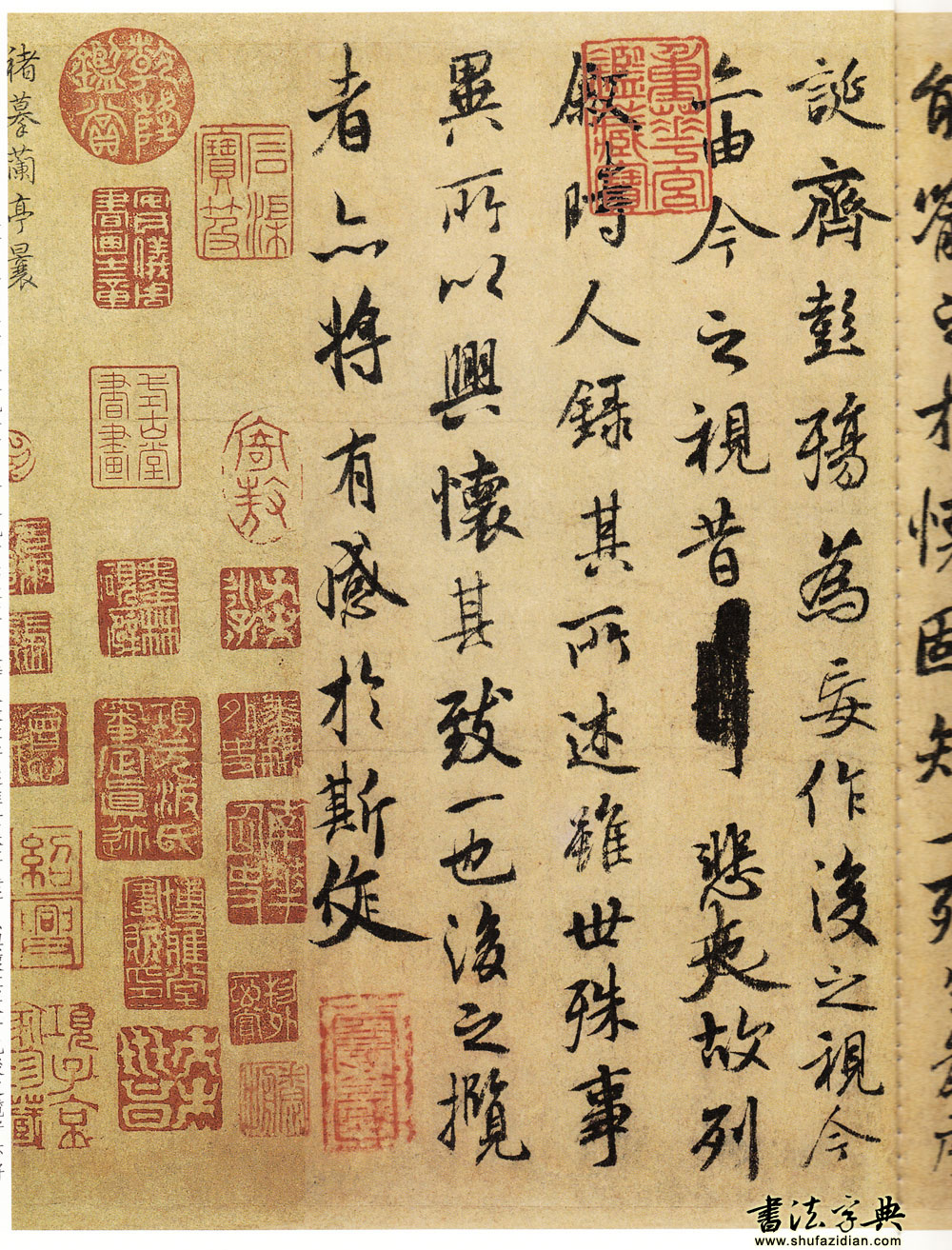
[Feng Chengsu, the third of the eight pillars of Lanting Preface]
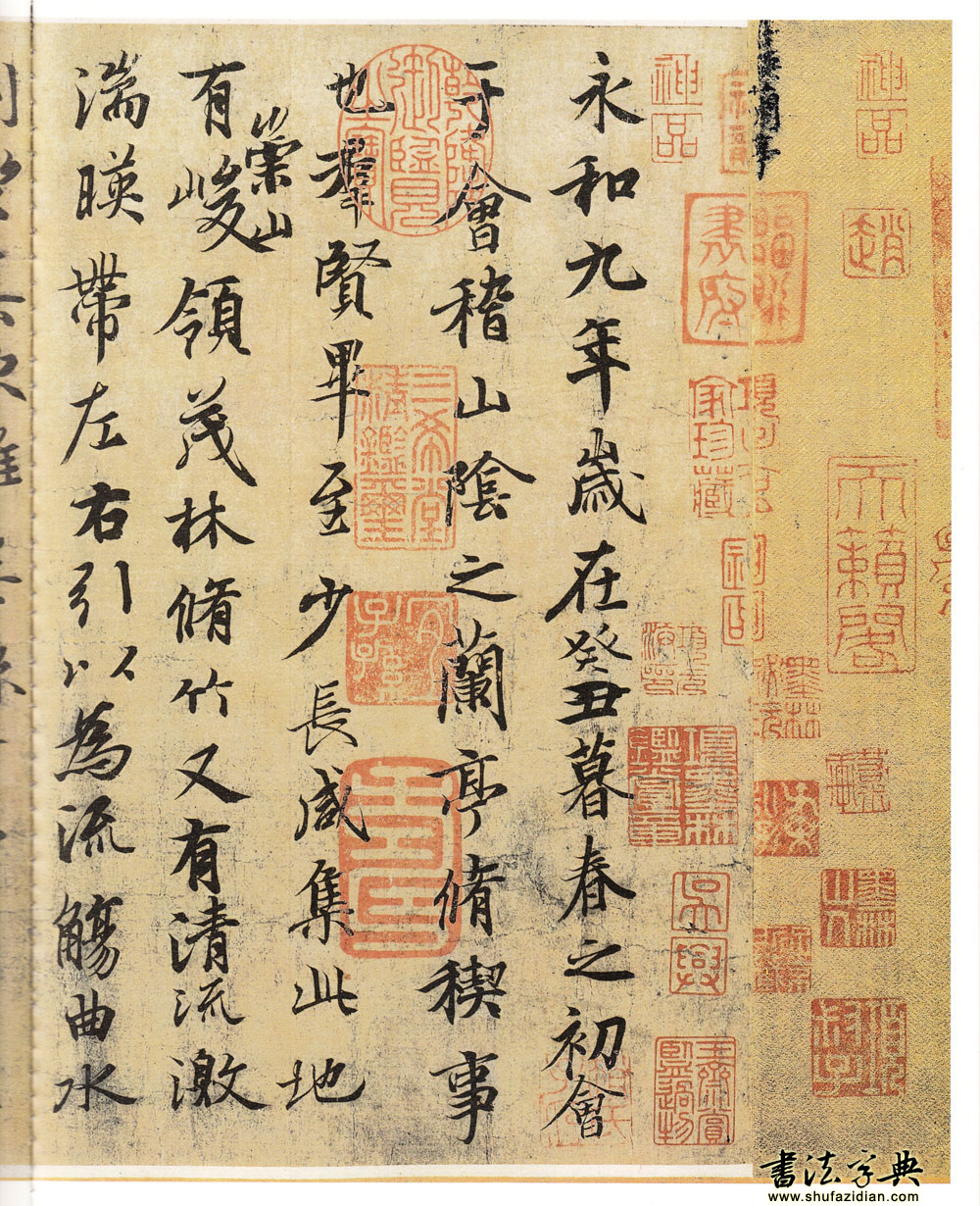
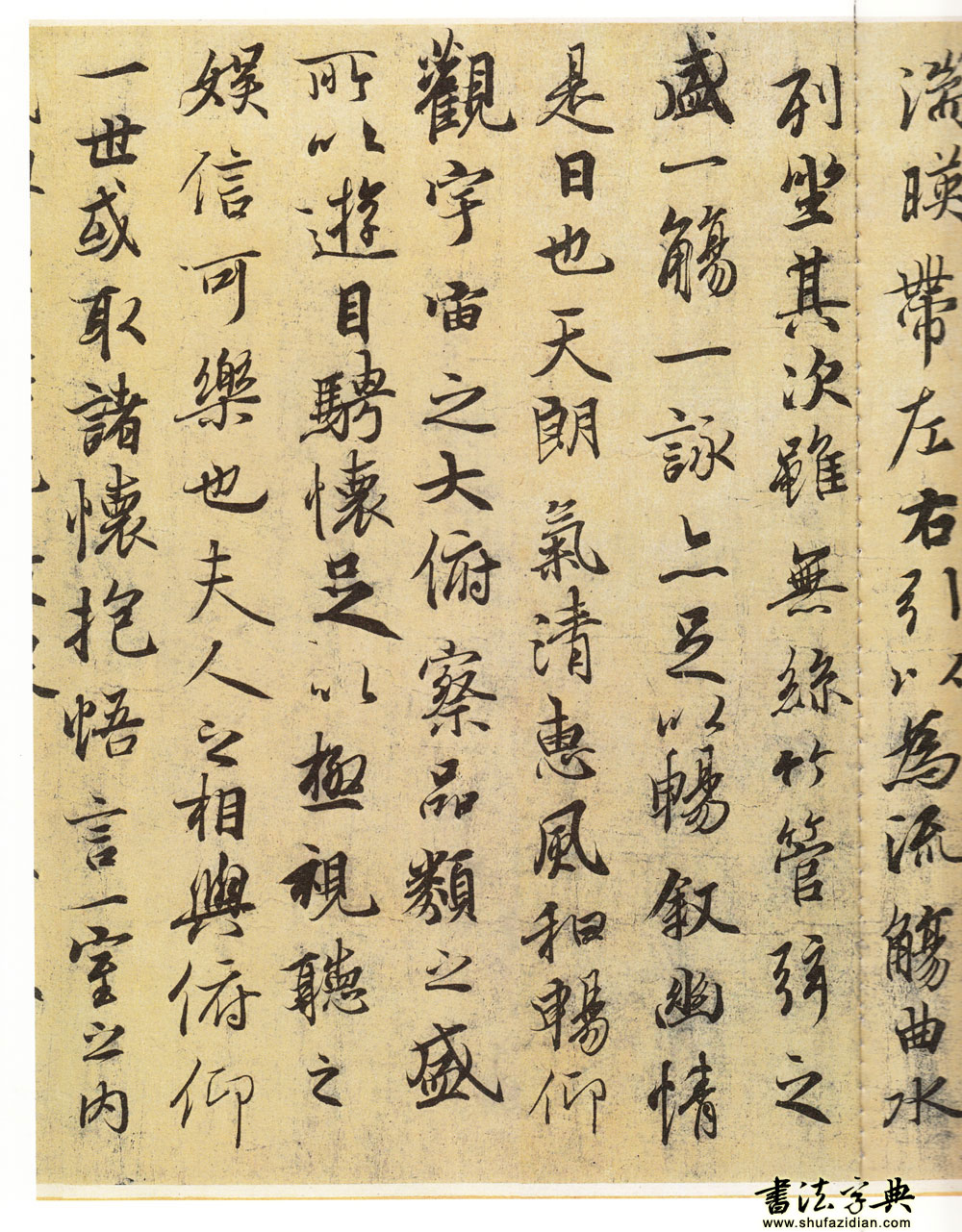
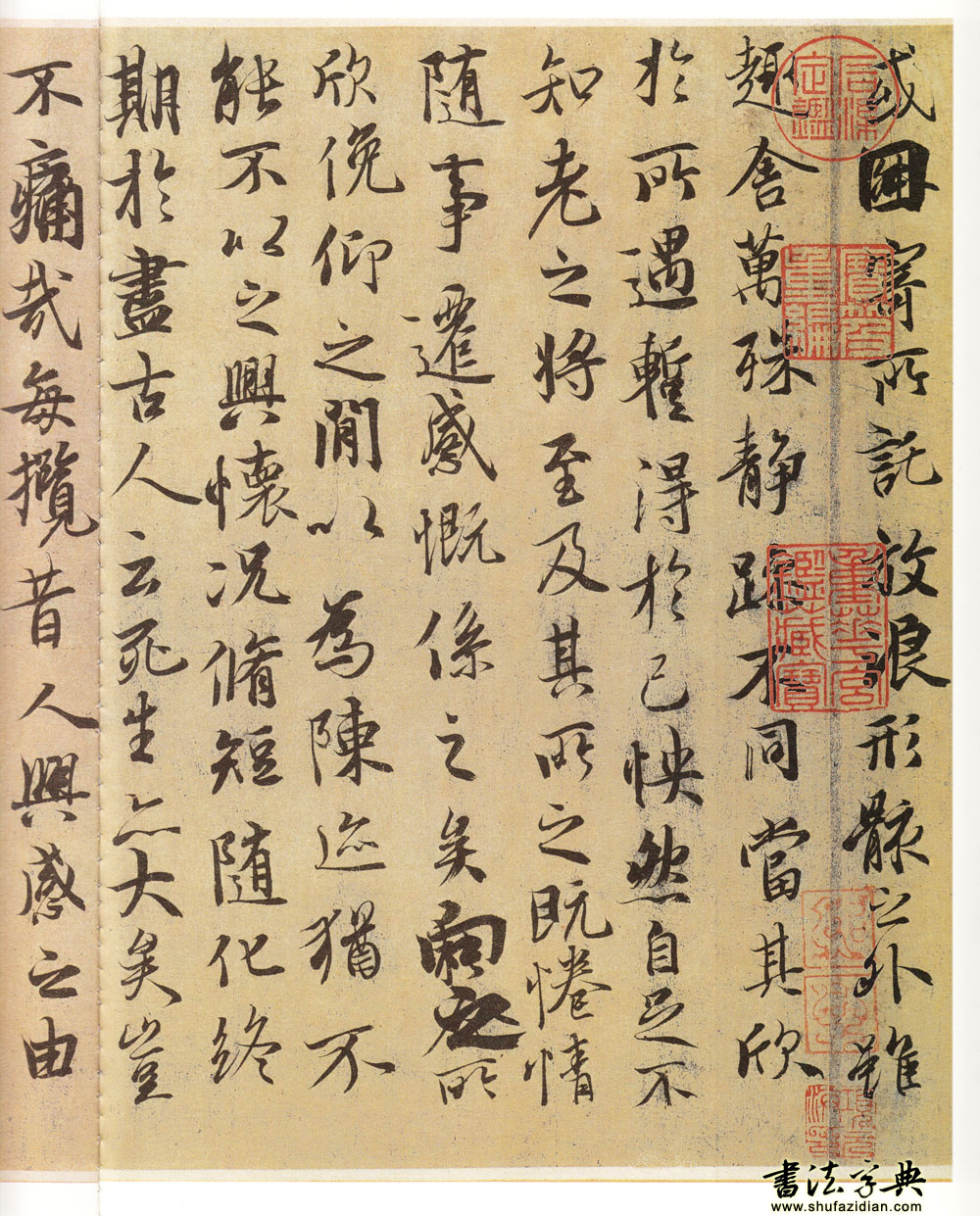
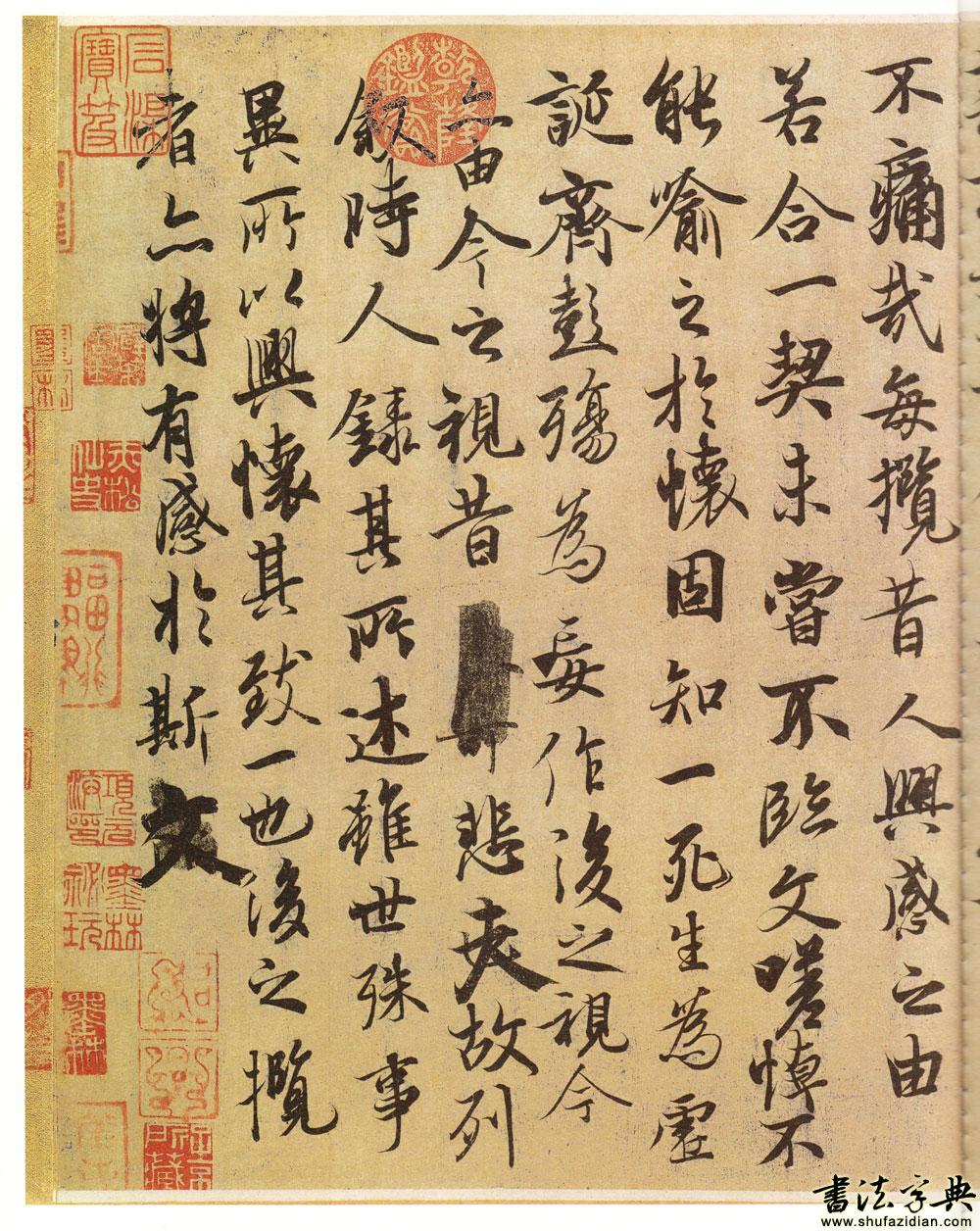
[Chu Suiliang's Yellow Silk Edition]
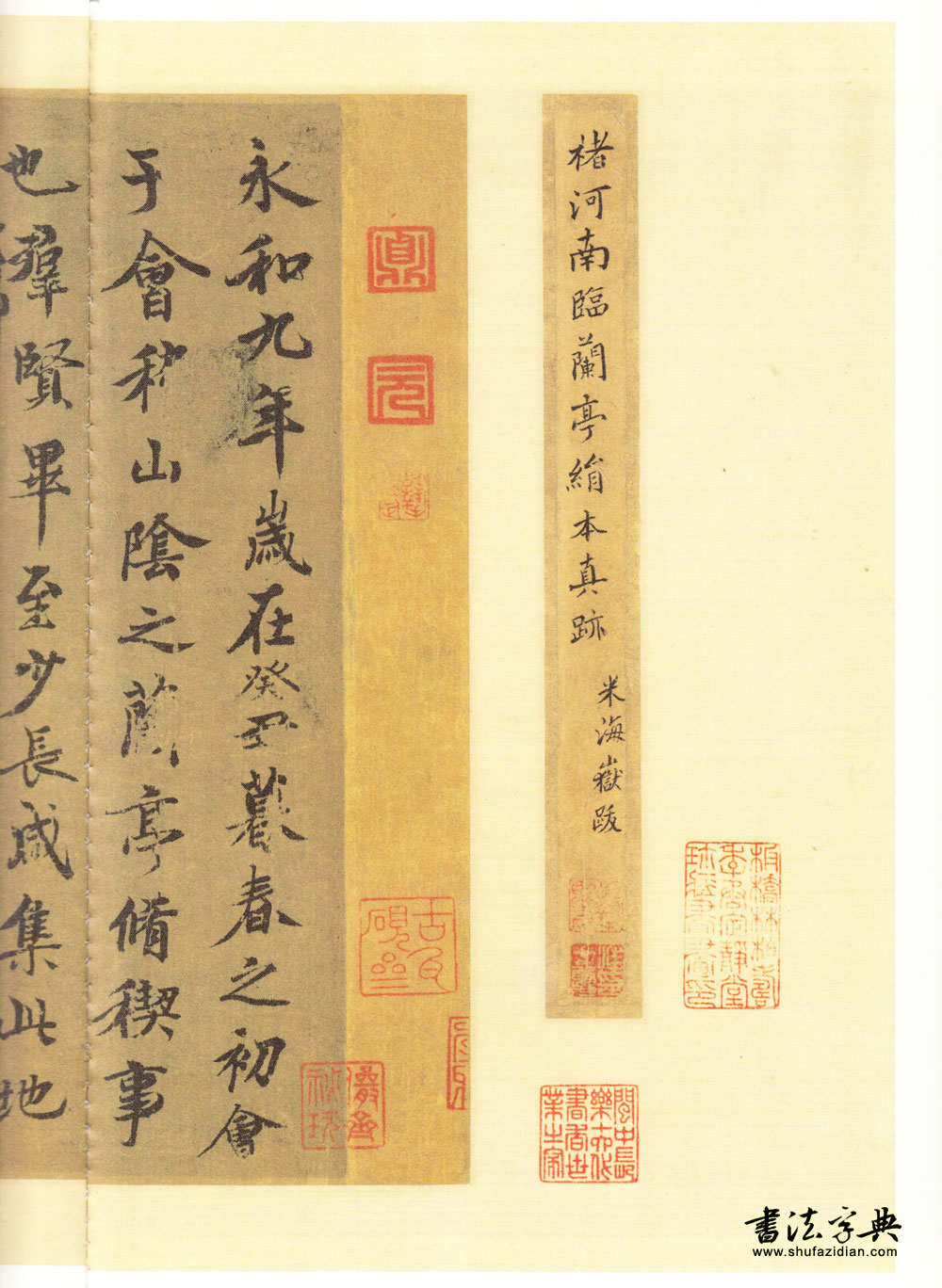
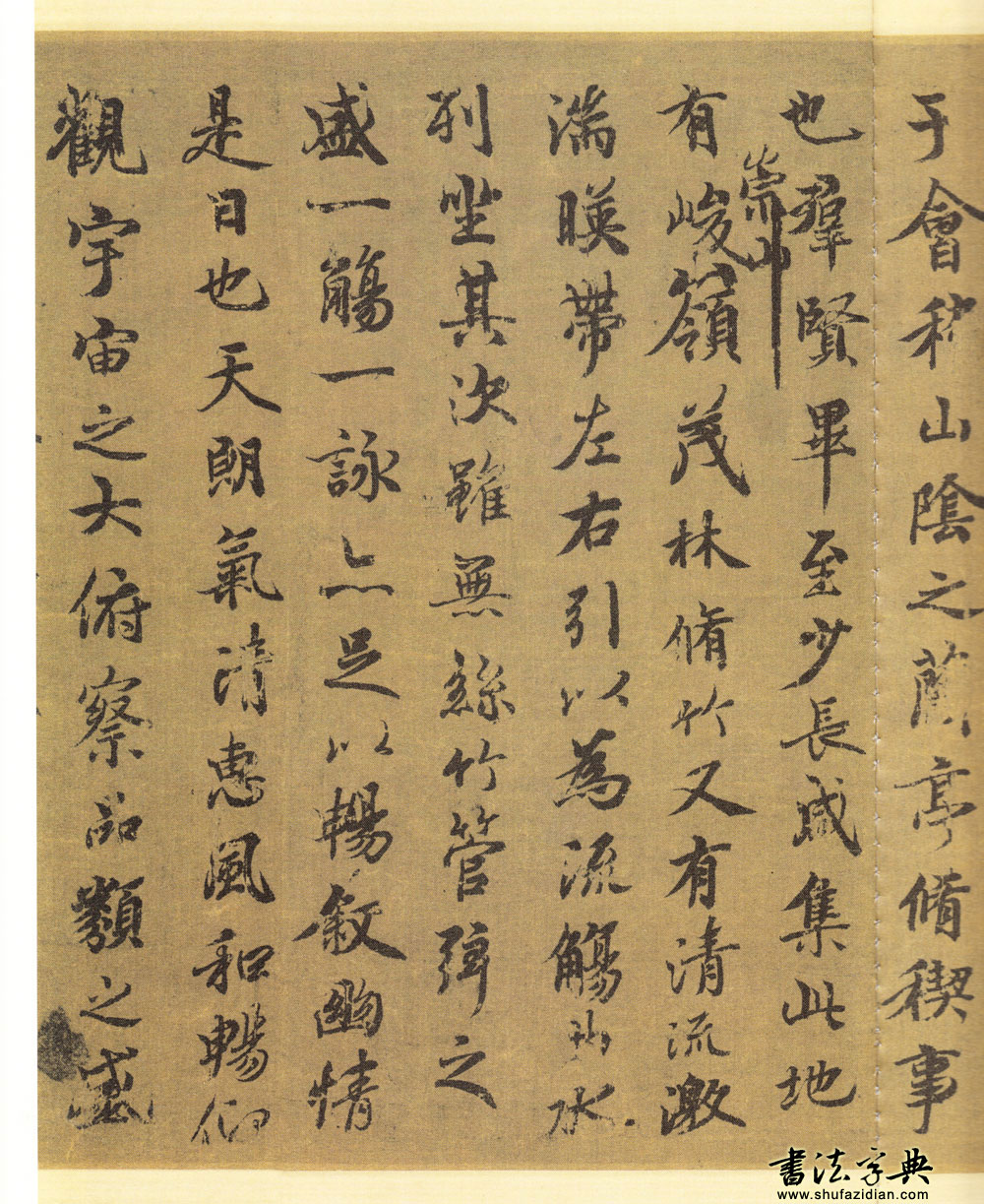
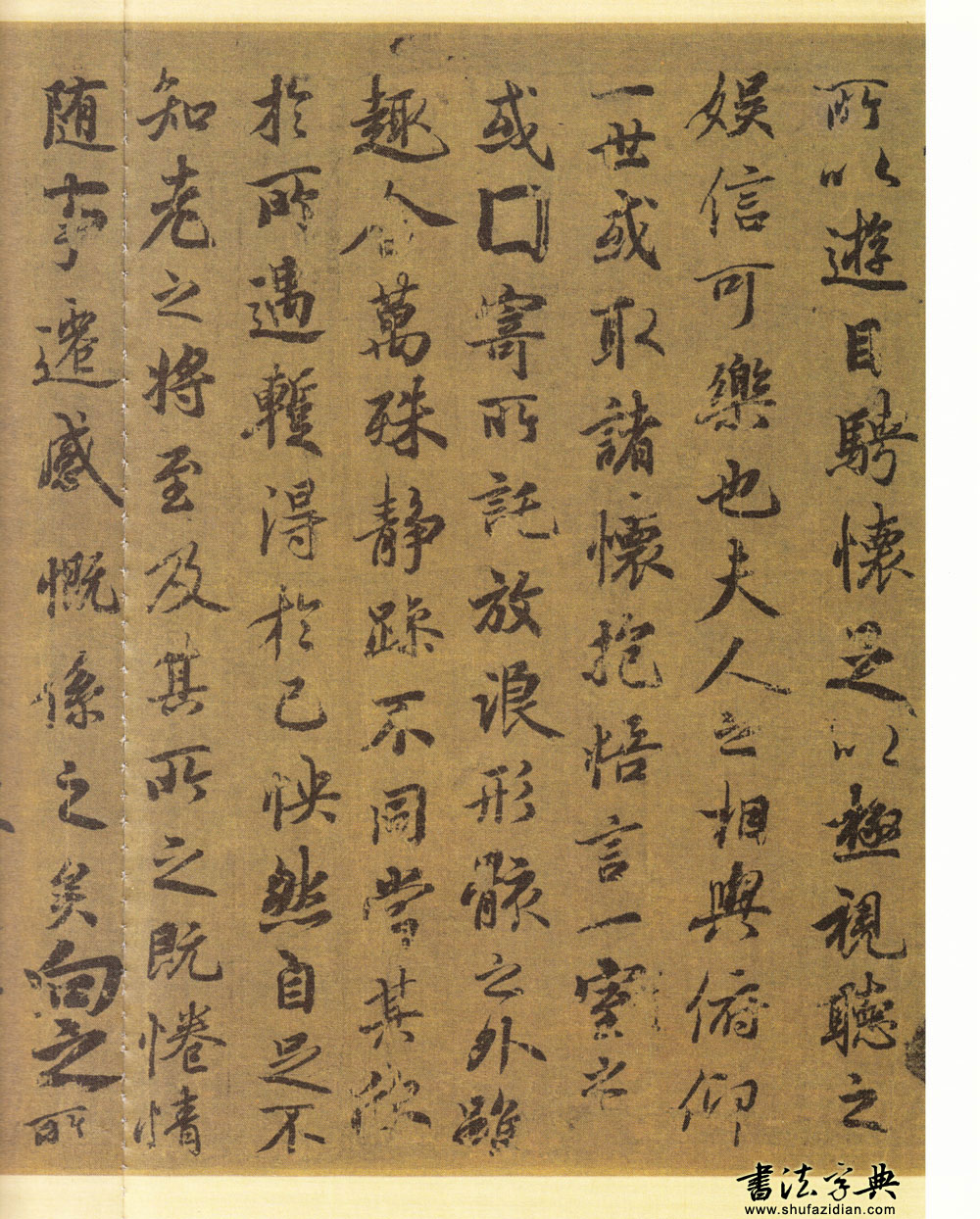
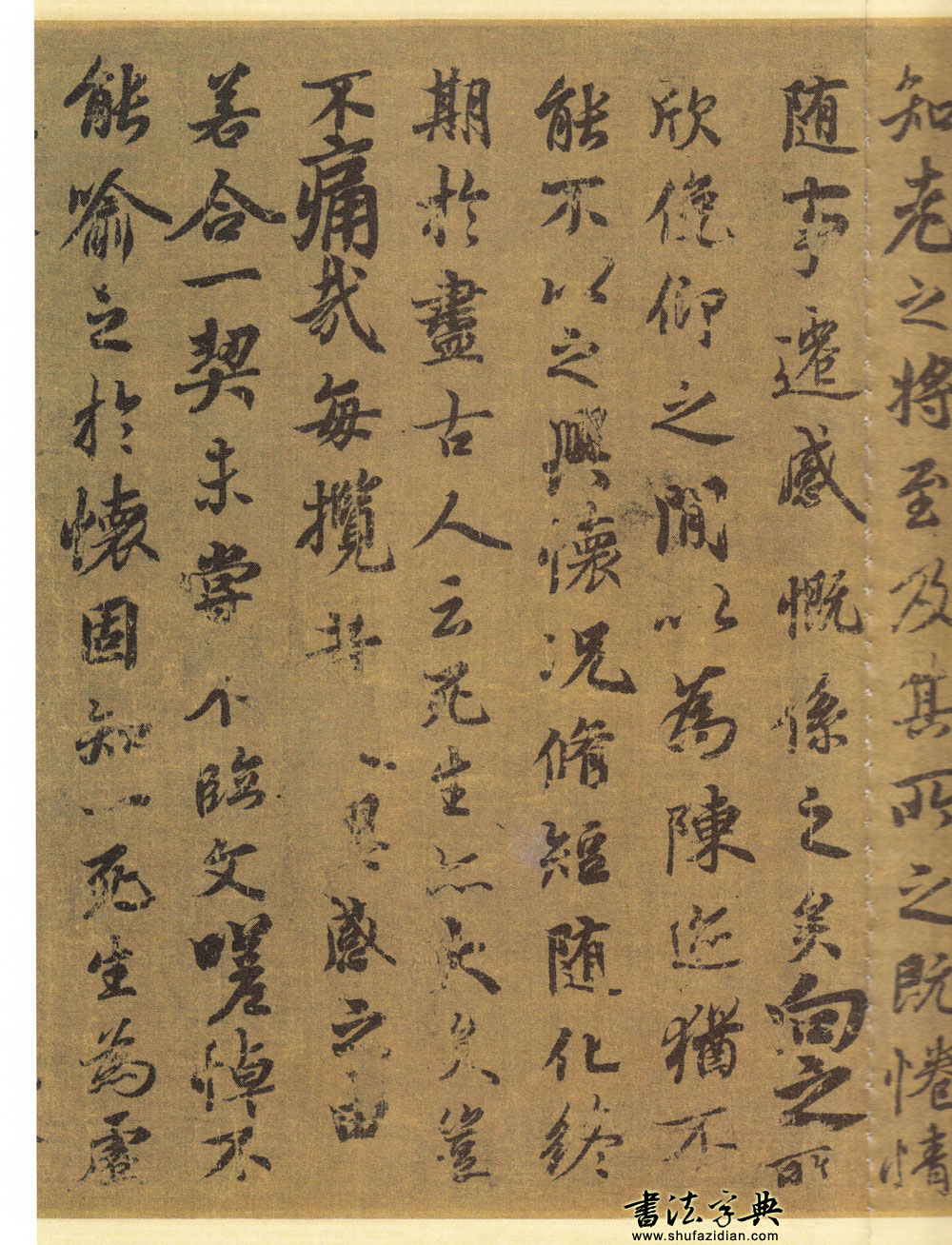
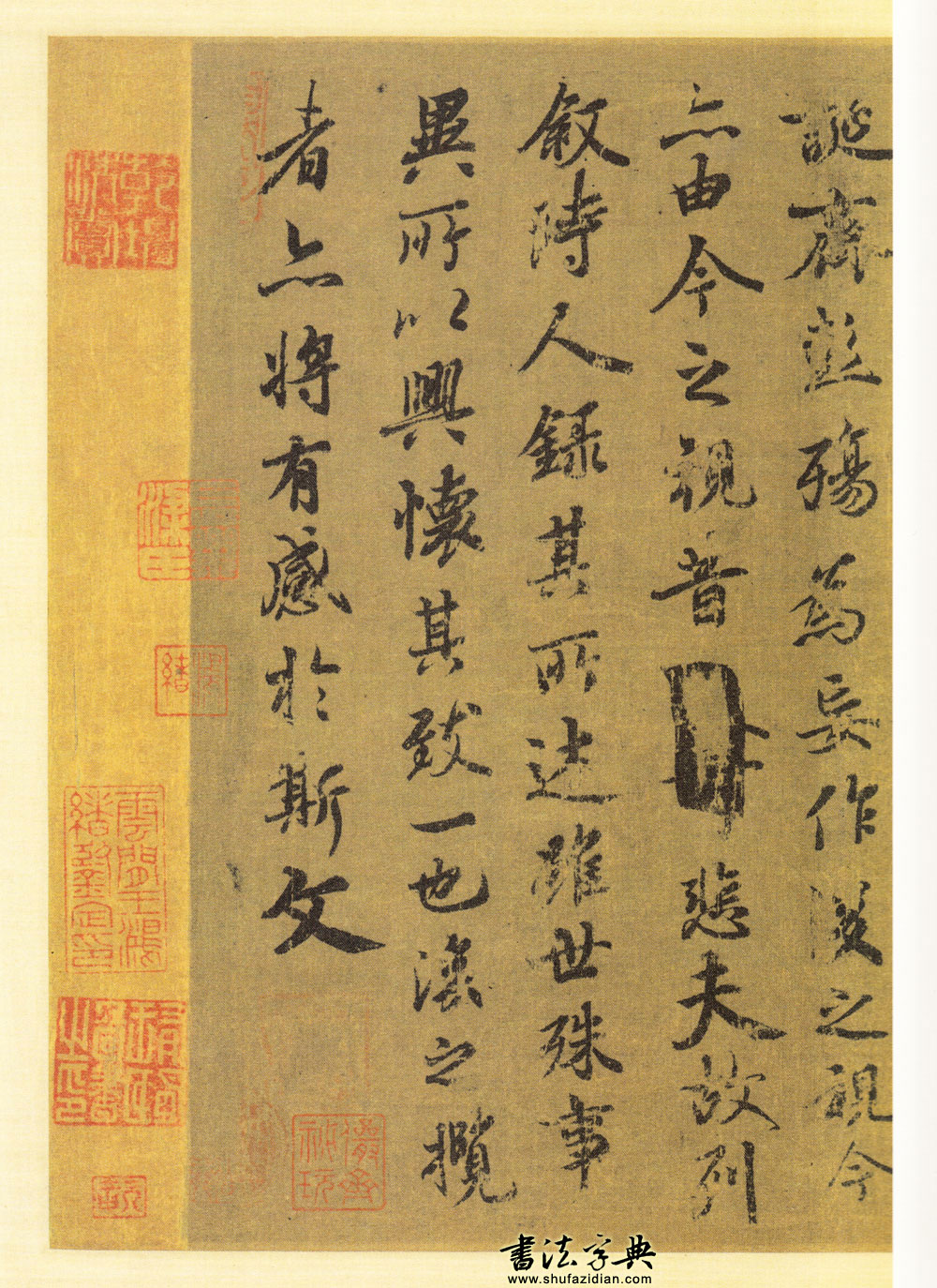
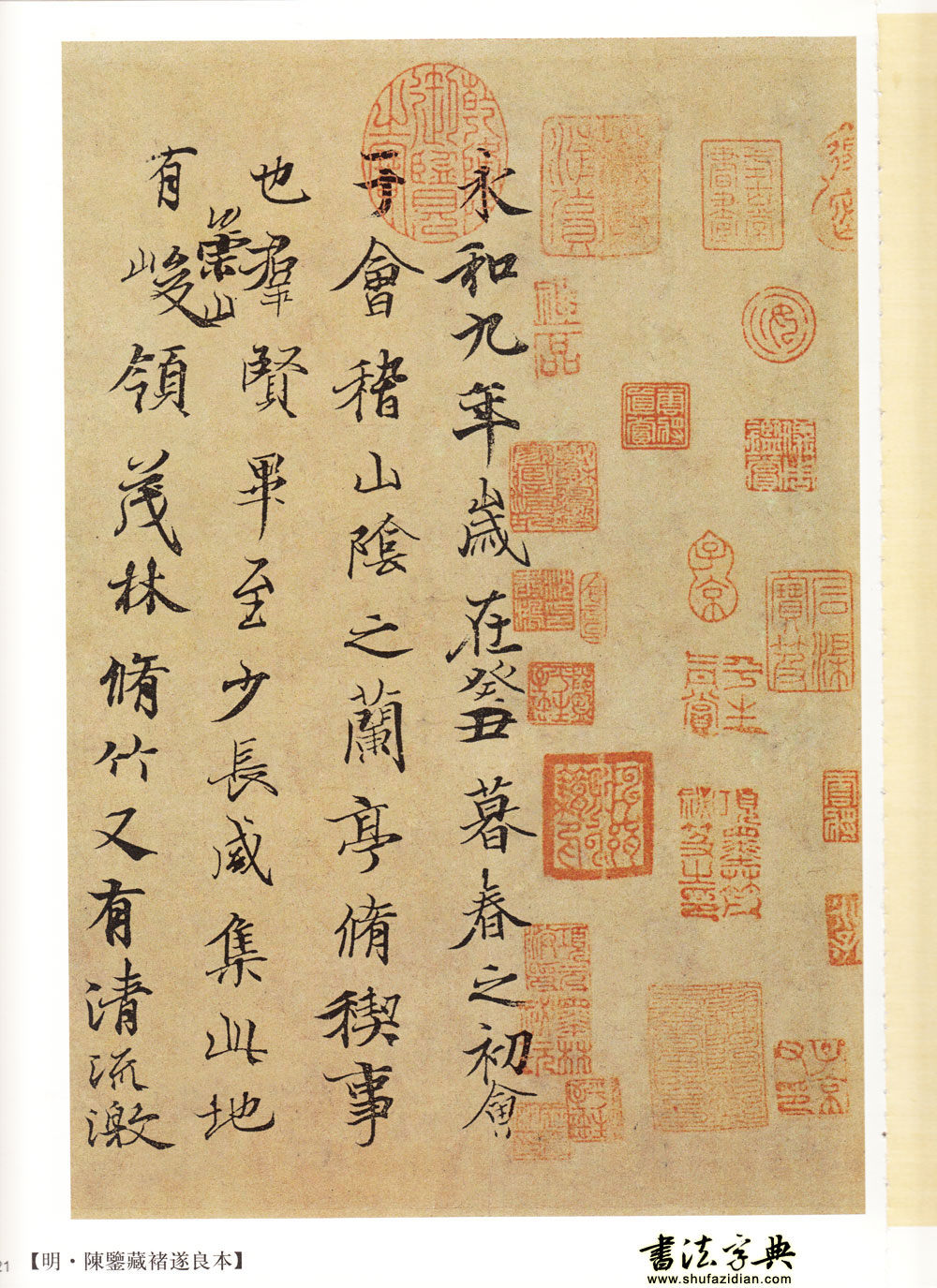
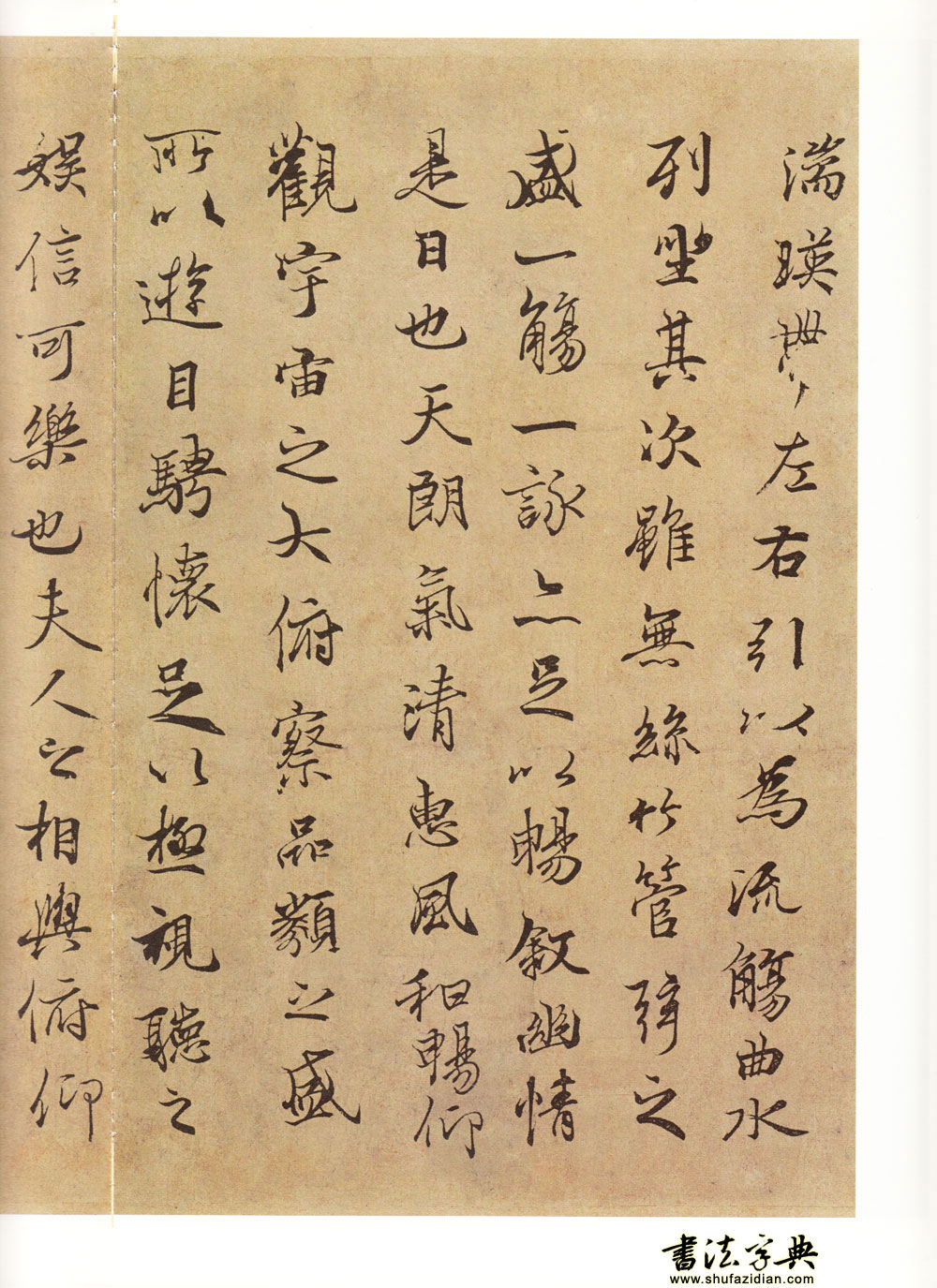
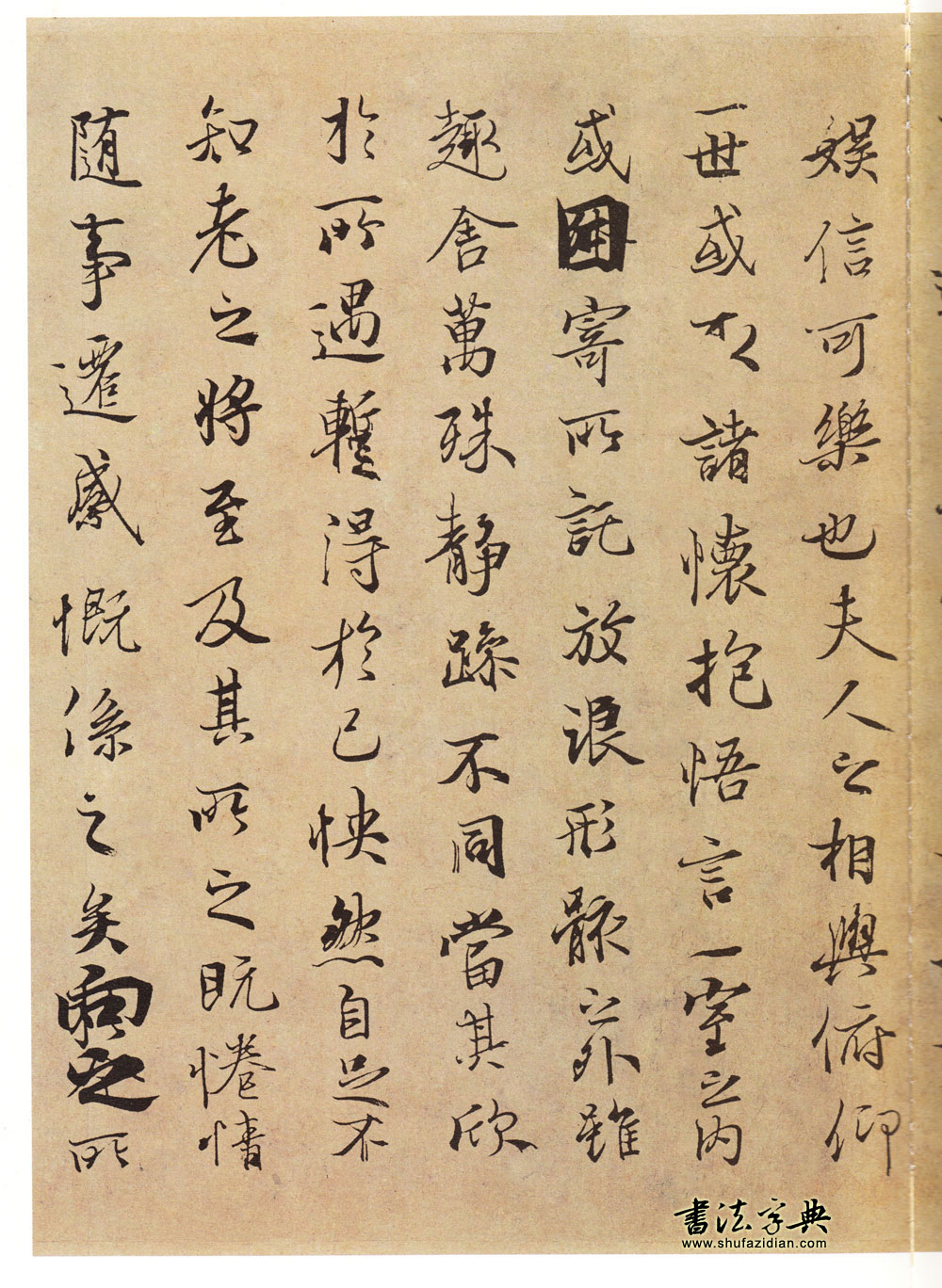
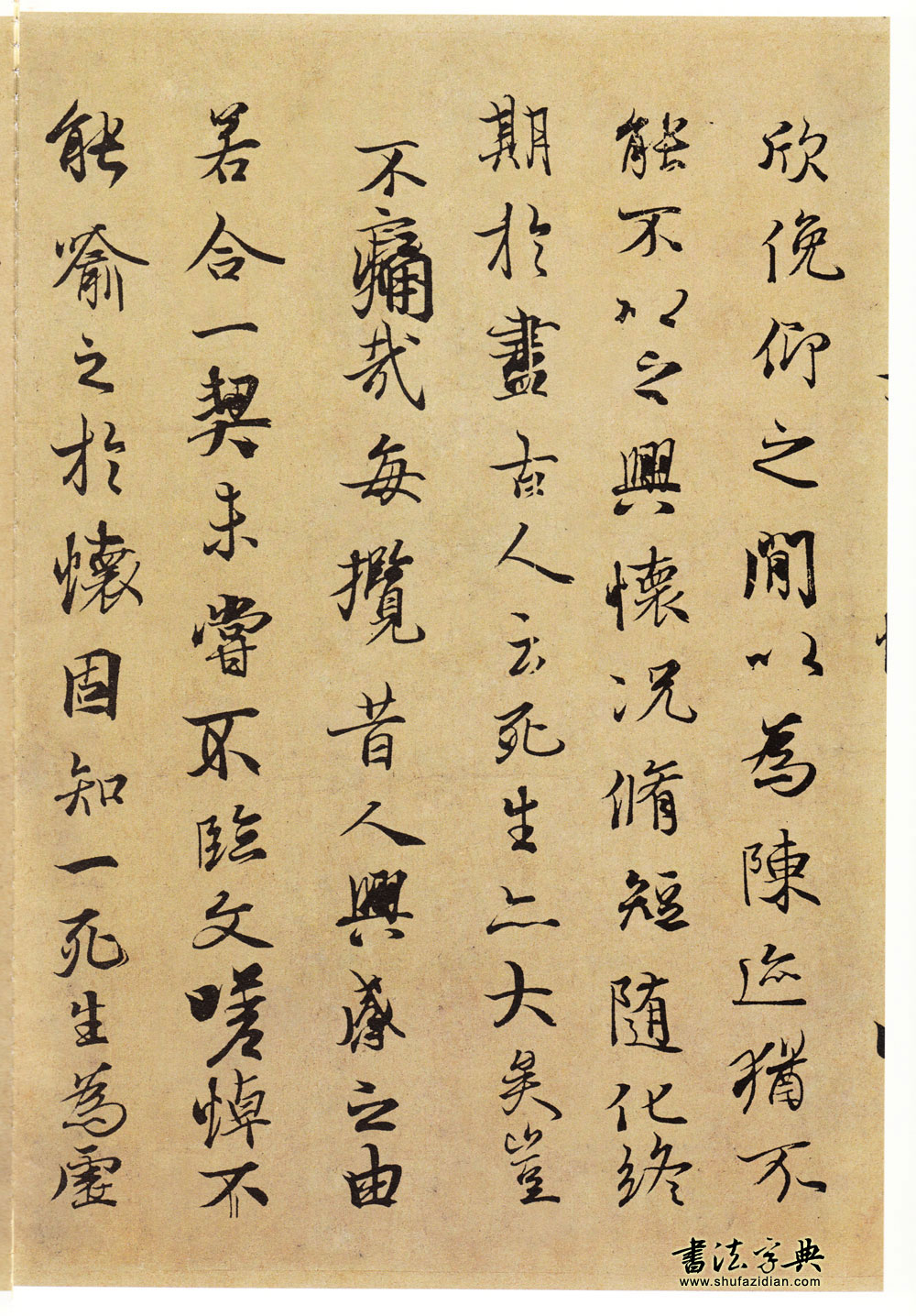
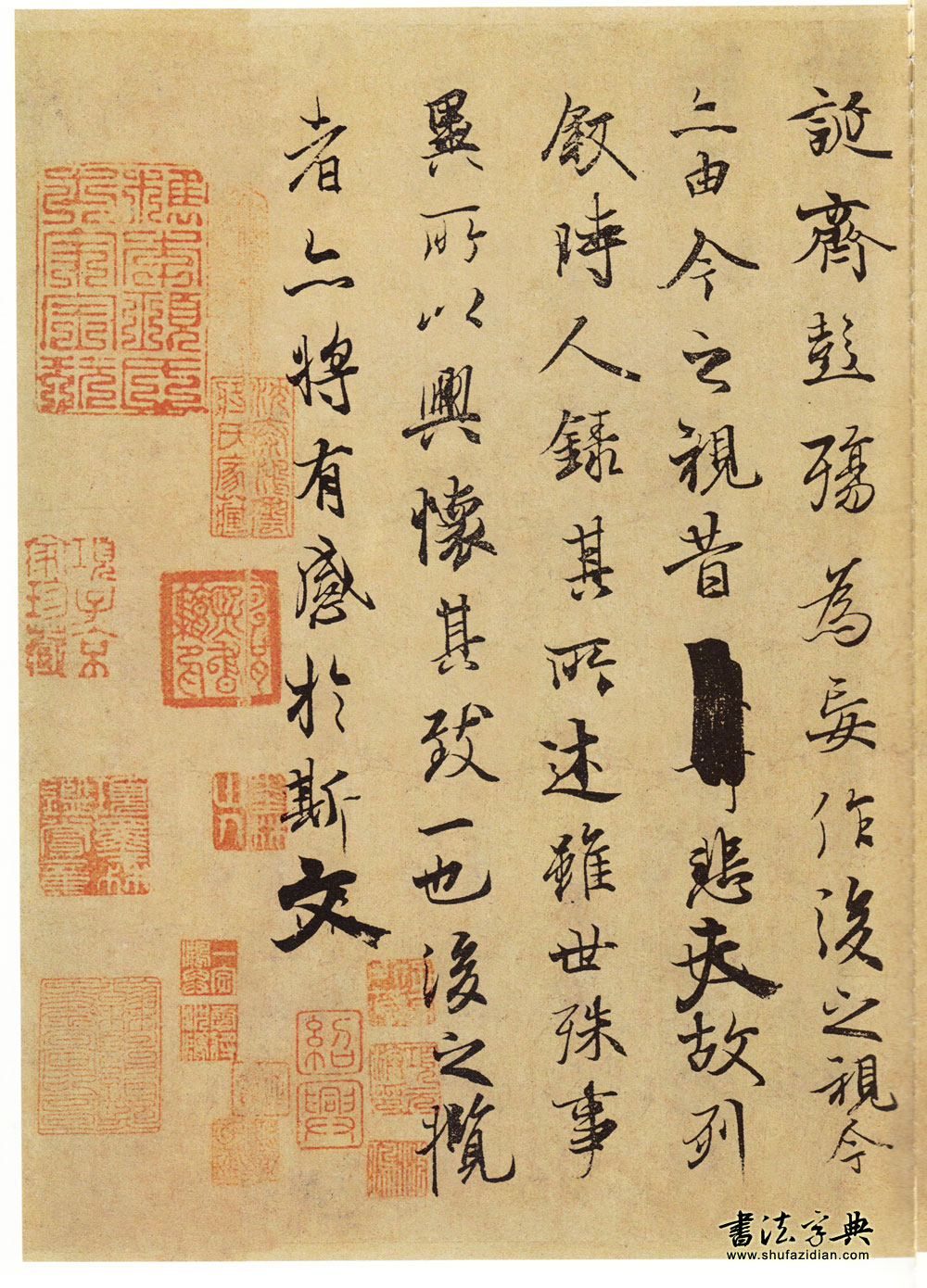
Preface to Dingwu Lanting
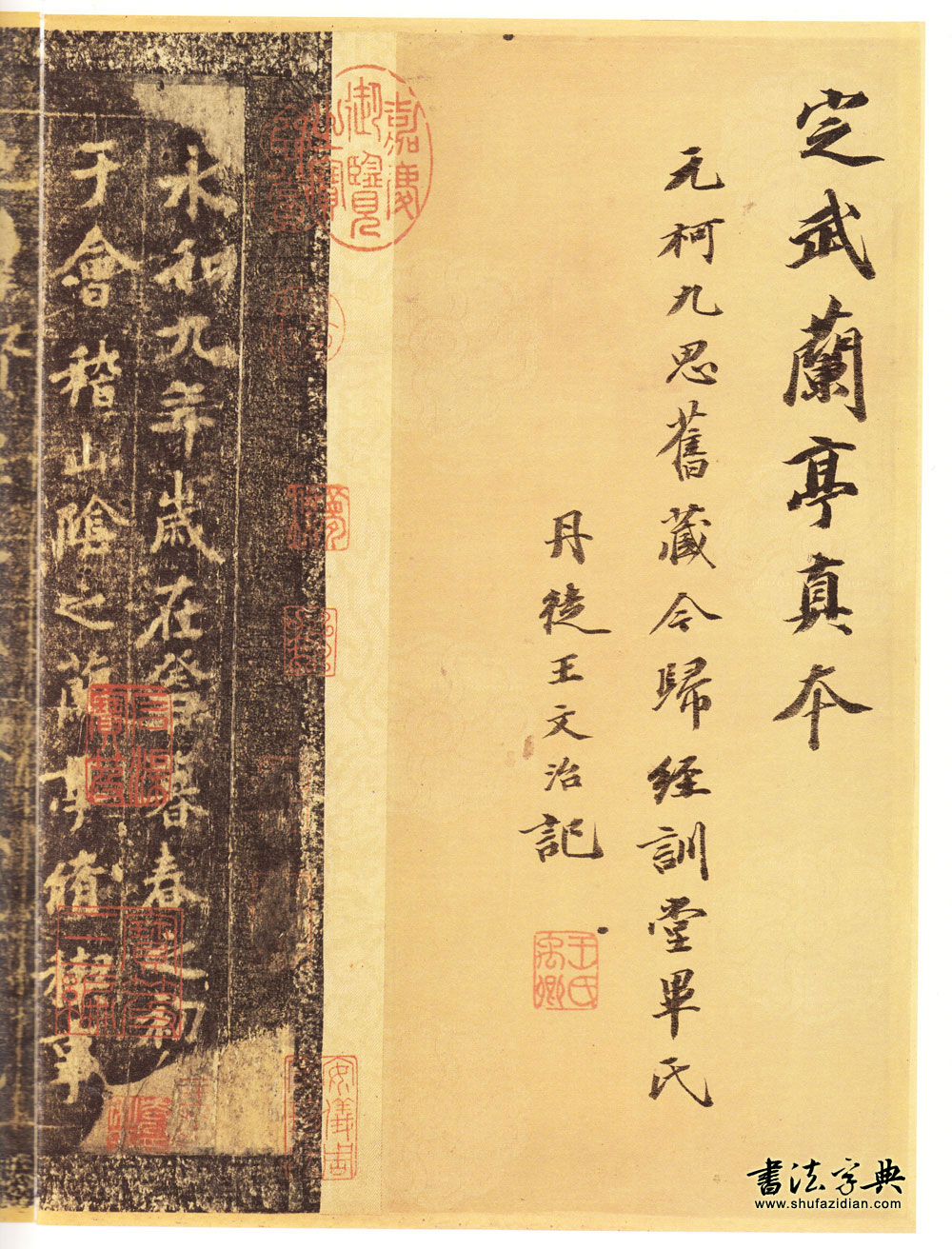
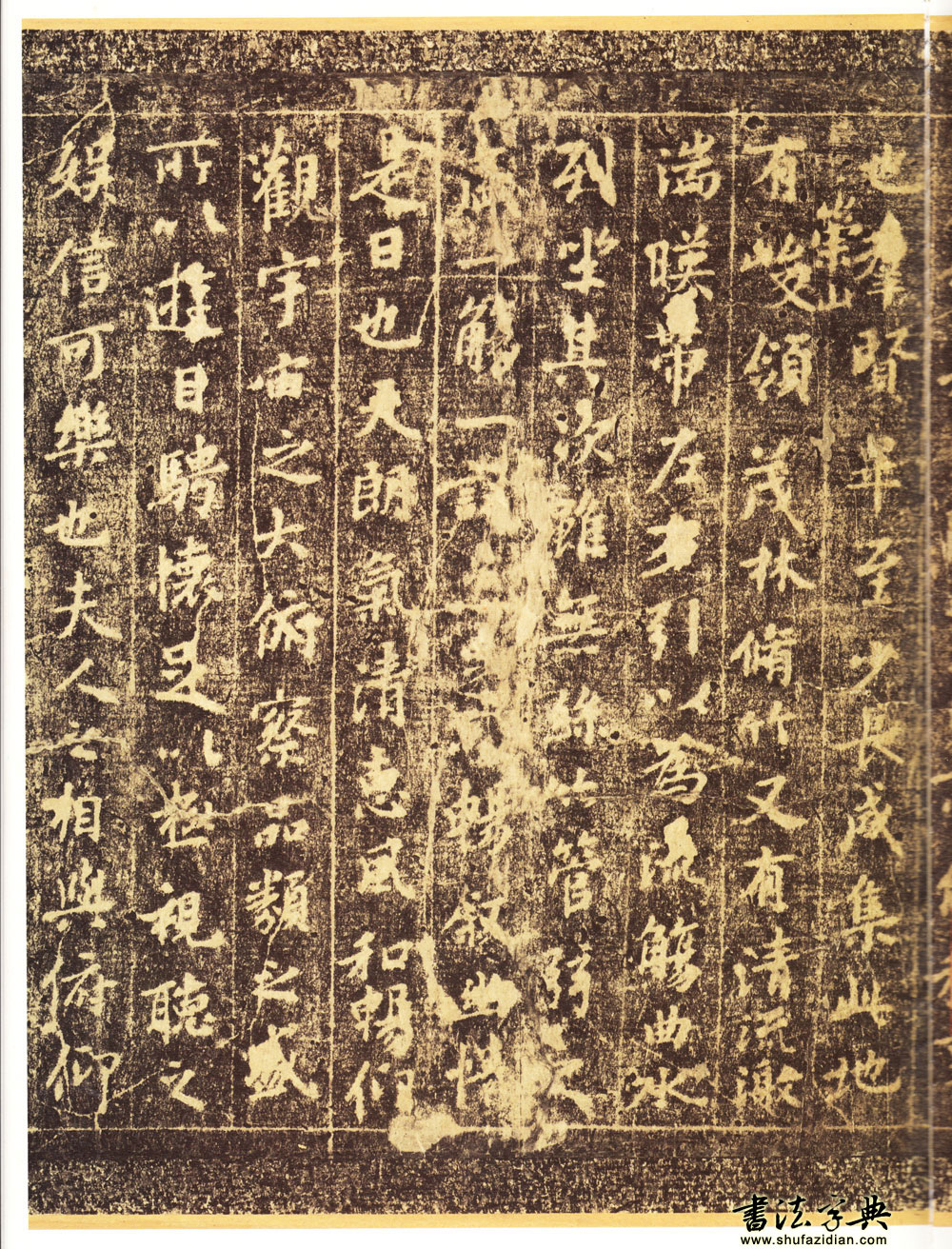
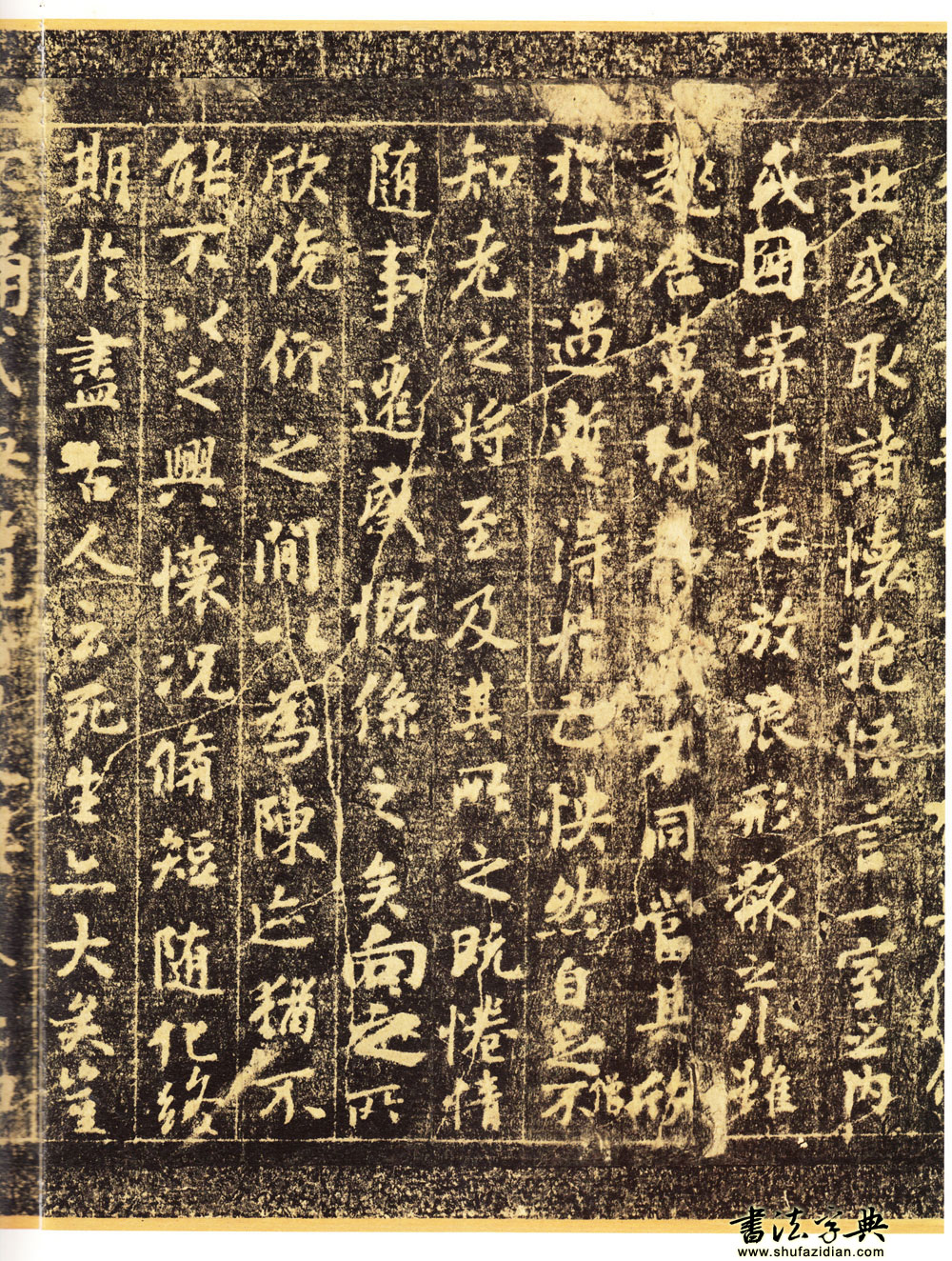
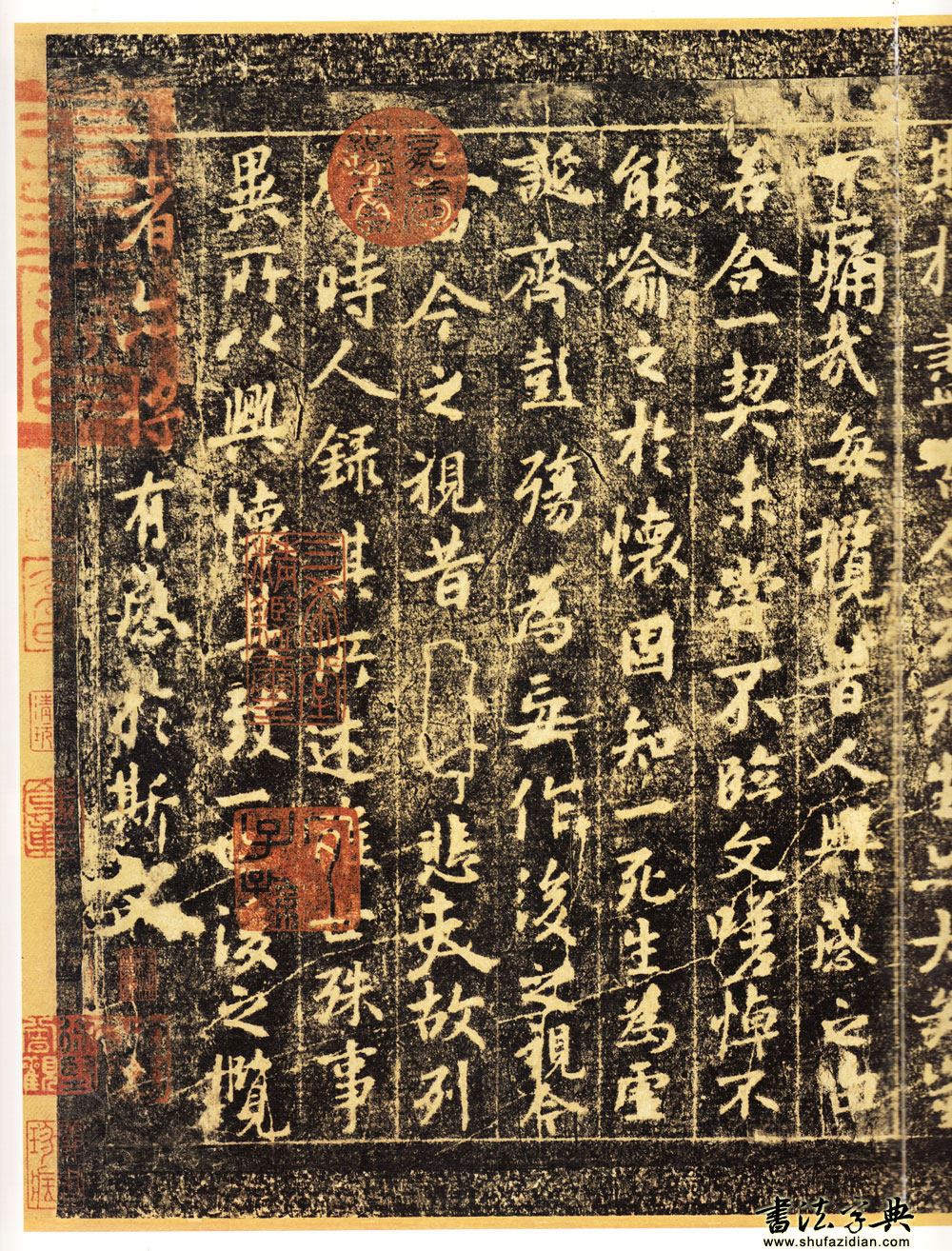
"Lanting" emerged from concealment and became a famous Dharma calligraphy masterpiece in the world, thanks to Li Shimin, Emperor Taizong of the Tang Dynasty. The original work of "Lanting" was buried in Zhaoling. It is his fault that the original work will never be extinct. At that time, Emperor Taizong ordered a copy of "Lanting" and gave it to the crown prince, the kings, and eight people including his close minister Fang Xuanling, totaling more than ten copies. Fortunately, the copy was passed out to the court and copied continuously. We can still see it today. The appearance of "Lanting".
Some people say that as long as Zhaoling is excavated, the original "Lanting" can be seen again. However, the Zhaoling Mausoleum had been robbed in the early 10th century AD. "New History of the Five Dynasties·Biography of Wen Tao" records: Wen Tao from Houliang Town, who was a thief, entered the mausoleum and saw stone beds lined up in the east and west compartments on both sides of the main bedroom. "There is a stone letter on the bed." It is an iron box that contains books from previous lives, Zhong (Yao) and Wang (Xizhi) paper and ink, and the handwriting is as new. Tao Xi took it and passed it on to the world." Ouyang Xiu said that Wen Tao only valued wealth and "picked out all the paintings and calligraphy in Zhaoling, removing the gold and jade on the scrolls and discarding them." Some of them were purchased by Song Taizong Zhao Guangyi, engraved into dharma stickers, and passed down to the world. "Only "Lanting" is truly authentic." The original is dead."
During the era of Xuanzong, the great grandson of Emperor Taizong, "Lanting" had been spread throughout the world. Wu Ping, a person at the time, traced the source: "Pu Che stole the rubbings and published them, so he passed them on to the outside world." Tang Pu Che was a humble court calligrapher. It was unbelievable that he dared to make many copies in private. But Wu made it clear that the "Lanting" handed down in the world came from a palace copy. Various ancient versions of "Lanting" all maintain the 28-line style, with consistent lines and styles. This phenomenon shows that "Lanting" passed down through the generations originated from a common ancestor.
"Orchid Pavilion" circulated in the Tang and Song dynasties became less and less popular as time went by. Among the famous calligraphy editions of "Lanting" seen today, the top three are Yu Shinan's Lin edition, Chu Suiliang's Lin edition, and Feng Chengsu's facsimile edition, all of which belong to the collection of the Palace Museum in Beijing. This ranking was arranged by Emperor Qianlong of the Qing Dynasty, and was combined with other related orchid pavilion calligraphy into eight types, which were engraved on the eight stone pillars of the "Sitting Stone Linliu Pavilion" in the Summer Palace (it was moved to Zhongshan Park in Beijing in the 20th century). The three books of Chu, Chu and Feng are called the first, second and third "Eight Pillars of Orchid Pavilion" in turn. Among the engravings of "Lanting", the "Dingwu edition" is the most famous. People in the Song Dynasty said that Ouyang Xun copied the original work of Youjun on the stone. These four famous versions of "Lanting" do not have the name of the writer. Each name has a coronation story.
Yu Shinan Linben
This piece of white linen paper measures 24.8 cm in length and 57.5 cm in width. The two papers are spliced, and the seam is between rows 14 and 15, with even row spacing. It has been framed many times in the past dynasties, and the ink color is dark. At the end of this painting, there is a line of small characters inscribed at the bottom of the lower part of the painting: "Your Majesty Zhang Jinjie Nu Shangjin", which is known as "Zhang Jinjie Nu Ben". Zhang is from Wanping, and is nicknamed "Jinjie Nu", which means a monk's slave. He was in charge of the dyeing and weaving craftsmen of the Yuan Dynasty, and was in charge of the Kuizhang Pavilion construction project during the reign of Emperor Wenzong of the Yuan Dynasty. At the beginning of this volume is the seal of "Tianli Zhibao" of Yuan Wenzong, also known as "Tianli Orchid Pavilion".
During the Ming Dynasty, this copy of "Lanting" was circulated among the people, and in the late Ming Dynasty it was returned to the great collector Wu Ting. Wu Ting, whose courtesy name was Yongqing and whose name was Jiangcun, was from She County (now Huizhou District, Huangshan City, Anhui Province). He was extremely wealthy, and his collection of paintings and calligraphy was comparable to that of Xiang Yuanbian (Zijing), a great collector of the Ming Dynasty. Wu Ting made friends with literati and calligraphers, and once lent this copy of "Lanting" to Dong Qichang, and asked for it back on New Year's Eve of the 26th year of Wanli (1599). After Dong Qichang collected it, he transferred it to Mao Yuanyi (Zhisheng), a Confucian general in the late Ming Dynasty, about the forty-sixth year of Wanli (1618). In the early Qing Dynasty, it was acquired by the great collector Liang Qingbiao, and then entered the inner palace of the Qing Dynasty. Emperor Qianlong wrote two inscriptions and postscripts, one of which was written in the twelfth year of Qianlong's reign (1747).
This copy of "Lanting" is called "Yu Shinan Lin Edition" and is attributed to Dong Qichang. When he ceded Mao Yuanyi, he wrote an inscription and postscript with the words "This volume seems to be coming from Yongxing". When Liang Qingbiao (Jiaolin, 1620-1691) framed it, he labeled it "Tang Yu Yongxing Linji Tie" and affixed it to the front of the volume. "Yongxing" is the title of Yu Shinan, a calligrapher in the early Tang Dynasty. Emperor Qianlong liked this big name and said in the postscript that "Dong Qichang is designated as a copy of Yu Yongxing". He also found a reason for Dong Qichang's remarks, "because it is different from Chu (Suiliang) outside the law". The charm is also". However, experts in appraisal did not believe Dong Qichang's words. Weng Fanggang (1733-1818), an appraisal expert in the Qing Dynasty, wrote an article "Sumi Zhai Lanting Kao" and believed that "Ying Shang and Zhang Jin Jie Nu's books are all descendants." Those who know a little bit about calligraphy and ink should not rely on themselves to copy." Qi Gong once read the original volume many times and agreed with Weng Fanggang's theory, and further suspected that this version "was written by the Song Dynasty people according to the Ding Wu version". However, the "fine knowledge" of scholars is not as good as the common theory of the previous dynasty, and the world still calls this version the "Yu Shinan Lin version".
Chu Suiliang's version
本幅淡黄纸本,纵24厘米,横88.5厘米。也是两纸拼接,接缝在19行与20行之间,行距匀称。后纸有米芾10行题诗,所以又称“米芾题诗本”。诗曰:“永和九年暮春月,内史山阴幽兴发。群贤吟咏无足称,叙引抽毫纵奇扎。爱之重写终不如,神助留为万世法。廿八行三百字,之字最多无一似。昭陵竟发不知归,摹写典刑犹可秘。彦远记模不记褚,《要录》班班纪名氏。后生有得苦求奇,寻购褚模惊一世。寄言好事但赏佳,俗说纷纷那有是。”北宋时,寻购“褚模”《兰亭》成为风气,指唐摹本为褚笔之说,流行渐多。米芾题诗讥讽了这种风气,更没有说这本《兰亭》是“褚模”或“褚遂良临本”。后人未解米诗之意,以为类似褚法,竟题为褚本。
启功说,这卷《兰亭》的字迹与后面米芾题诗的笔法相同,纸也一律,“实是米氏自临自题的”。米芾得益褚书以精于摹古自豪,喜欢显示自己临摹乱真的本领,他来临写一本也有可能。他在诗中说“寄言好事但赏佳,俗说纷纷那有是”,似乎暗示世间好事者不要上当。
冯承素摹本
本幅白麻纸本,纵24.5厘米,横69.9厘米。两纸拼接,前纸13行,行距较松;后纸15行,行距偏紧。帖首前隔水上端有旧题“唐模兰亭”四字,左边骑缝处残留“神龙”小印左半,故称“神龙本”。此本递藏于南宋内府、元朝郭天锡、明朝项元汴、清朝内府。全卷鉴藏印多达百数十方,后纸有宋朝李之仪、石苍舒,元朝赵孟頫、郭天锡、鲜于枢、邓文原,明朝李廷相、文嘉、项元汴诸家题识观跋17则。
此卷所见“神龙”印,郭天锡在至元癸巳(1293)的题跋指为唐中宗的年号印。中宗李显是太宗孙,高宗子,武则天所出,一生两次登基。第一次在嗣圣元年(684),两个月就被武后废为庐陵王。武后当政时期的圣历元年(698)召回,又立为皇太子。神龙元年(705)正月武则天病重之时,张柬之迎李显监国,逼武则天退位,李显再次即位,恢复唐朝国号。中宗“复辟”时,袭用武则天“神龙”年号,两年后改元“景龙”,又三年,被韦后鸩毒而死,年55。
郭天锡把此本《兰亭》定名为“神龙本”,认为“此定是唐太宗朝供奉榻()书人直弘文馆冯承素等奉圣旨于《兰亭》真迹上双钩所摹”。他表达谨慎,只说“冯承素等”。因为冯承素之外,唐朝宫廷书人还有赵模、韩道政、诸葛贞、汤普彻等人,郭天锡不能确认究竟出自谁手,只作整体判断。明朝万历五年(1577),项元汴省复为单,题为“唐中宗朝冯承素奉勒摹晋右军将军王羲之兰亭禊帖”,凿实为冯承素。项元汴还把冯承素和“神龙”年号印联系起来,附会成中宗时代人。双钩摹搨是精细的活计,费眼力,如果贞观末年(649)冯承素30岁,即使活到唐中宗神龙年间(705~706),当有87岁,老眼昏花,岂能从事摹搨。
这本《兰亭》是公认的唐人摹本,比所谓虞临本、褚临本的影响大。启功《兰亭帖考》说:“这帖的笔法秾纤得体,流美甜润,迥非其他诸本所能及。破锋和剥落的痕迹,俱忠实地摹出。”行款前疏后密,行式上保存了王羲之原稿近边处挤写的状态。“从摹本的忠实程度方面来看,神龙本既然这样精密,可知它距离原本当不甚远。”但是这本唐摹《兰亭》过于妍媚,一些学者以此怀疑《兰亭》的真实性。
定武本
现身宋朝的定武本是《兰亭》诸多刻本中最著名的一种,有界栏,公认为唐朝刻本。宋人说,朱梁篡唐,原石移置汴都(今河南开封)。契丹破石晋,载石渡河而北,流落定州(今河北定县)。北宋庆历年间(1041~1048)被定州士人李学究得到,死后被官府索走,放在定州官库里。神宗熙宁年间(1068~1077),薛向守定州,离任时带走原石。徽宗大观年间(1107~1110),薛家交还原石,置于汴京宣和殿。这本《兰亭》石刻在宋朝北疆定武军发现,宋人习称“定武本”,还有“定武兰亭”、“定州本”、“定本”、“定帖”之称。
宋人喜好传刻《兰亭》,特别是南渡之后,“江左好事者往往家刻一石”。按复制的对象看,《兰亭》刻本可以分为三类。
第一类是翻刻定武本。李学究得到定武《兰亭》未久的庆历八年(1048),韩琦镇守定州,李学究献定武拓本,韩琦索原石,李学究别刻一石上交。李氏死后,其子以原石拓本售人,每本千钱。及宋祁守定州,李氏子欠赋税,宋祁以公帑换取刻石,藏于公库。神宗熙宁年间(1068~1077),薛向守定州,其子薛绍彭(后与米芾并称“米薛”)别刻一石留定州,换走原石,并在原石上凿损“湍、带、右、流、天”五字作为记号。自此,拓自原石的定武本遂有“未损本”与“损本”之别。金兵陷汴京,原石亡失,此后翻刻本,率是五字“不损本”。
第二类是传刻定武本以外的古刻本。徽宗时,米芾父子三人传刻杜宝成家传的唐刻本《兰亭》,“五日模”、“善工十日刻”,号为“三米兰亭”。徽猷阁学士胡世将在豫章所刻两本《兰亭》,其中一本“出于钱氏贞观本”,估计也是唐刻本。
The third category is the ink copy of the Tang Dynasty. In the first year of Shaoxing in the Southern Song Dynasty (1131), Emperor Gaozong summoned officials in the political hall. Xin Daozong, an official of the Privy Council, presented the Tang version of "Lanting" in his collection. He said it came from the inner palace of the Tang Dynasty. Emperor Gaozong had it engraved in Kuaiji.
There are many printed copies of "Lanting", and Sang Shichang's "Lanting Tie Kao" records more than 60 kinds. The Dingwu edition is a fine copy and has a higher reputation than other editions, making it highly prized in the world. Therefore, when people in the Song Dynasty hid the engraving of "Lanting" for themselves, they would praise the original version of Dingwu. There are many speculations about who copied the Dingwu rough stone (who wrote it), including Zhiyong, Ouyang Xun, Chu Suiliang, Zhao Mo, Huairen and Wang Chenggui. Later, the theory that Ouyang Xun copied Shangshi prevailed, and the Dingwu edition was attributed to Ouyang Xun.
People in the Song Dynasty praised Dingwu's "Lanting" not only because of Ouyang Xun's name. You Miao, a bibliophile in the Southern Song Dynasty and one of the "four great poets", said: "The Dingwu version of Dingwu is highly valued because of its theory of valleys." Wang Anshi Great-grandson Wang Houzhi put it more specifically: "Since the Wuben in Jiading, the valley, it was thought that fat would leave no meat and thin would not show off the bones, so the scholar-bureaucrats fought for the treasure." Huang Tingjian evaluated the Wuben in this way and compared it with the other two engravings he had seen. This "extremely fat" book is said to have been written by Chu Tingjie, a calligrapher in the Kaiyuan period of the Tang Dynasty. Another "extremely thin" book was unearthed from the ground and was obtained by Zhang Jingyuan, a bachelor of Longtuge in the Song Dynasty. The calligraphy and painting are light, thin and strong. It is said that it was visited by Chu Suiliang and was named "Chu Lan". These two books have long since disappeared, but Huang Tingjian's "Fat leaves no flesh, thin leaves no bones" has been widely circulated and has become a famous saying in appreciating the Dingwu version.
The engraving of "Lanting" by Dingwu is a mixture of genuine and fake. Zhao Mengfu lamented in the Dingwu version of "Lanting Thirteen Postscripts": "Now that the stone carvings are dead, good people in Jiangsu often carve one stone at home, without worrying about hundreds of copies, and it is difficult to tell the real ones from the fakes." Wang Shizhen of the Ming Dynasty was not like Zhao Ziang Being so confused, he said: "There are three kinds of Dingwu originals. The undamaged original is the original extension; the damaged original is left by Shaopeng; the undamaged original is the Dingwu re-carving. The reason is that if the original is not damaged, there are genuine and fake ones. And the damaged original is the original one. However, that’s why I think it’s expensive.”
Dingwu's "Lanting", which was once extremely popular, still had many copies circulating in the early Qing Dynasty, but now there are very few, and there are only three famous copies that have been circulated. There are two copies in the collection of the Tokyo National Museum in Japan. One is the old copy collected by Wu Bing and is a non-destructible copy. The first is the Dugu Monk edition, which was once collected by Zhao Meng. It was burned during the Jiaqing period of the Qing Dynasty. Three small pieces remain. There are inscriptions and postscripts by people from the Song, Yuan, Ming and Qing Dynasties at the back of the volume.
There is also a copy hidden in the "Forbidden City" in Taipei, called the old collection of Ke Jiusi, which is a damaged copy with five characters. There are more than ten inscriptions and postscripts at the back of the volume from the Song to the Qing Dynasty. Famous inscriptions from the Yuan Dynasty including Xian Yushu, Deng Wenyuan, Zhao Mengfu, Yu Ji, Kang Lizishan and Yuan Jue all left wonderful inscriptions. This ink rubbing is lighter and you can notice that the stone surface is uneven and has cracks. The word "hui" at the end of line 1 is missing, and lines 7 and 14 are missing. After repeated rubbings, the writing edge gradually became bald and the words were unclear. Compared with Feng's copy, Dingwuke's Jiusi version has rich calligraphy and painting, especially the horizontal strokes, which are not so sideways and more simple.
Between lines 14 and 15 of Ke Jiusi's version, there is a word "Monk" at the bottom, which is generally believed to be the signature of Xu Sengquan, a court appraiser of the Liang Dynasty. There is also a calligraphy artist in Liang Neifu called "Jiang Monk Bao", whose name also has the character "monk". Liu Kui's "Jia Hua of the Sui and Tang Dynasties" mentions that the authentic copy of "Lanting" was "out of Liang Dynasty", indicating that "Lanting" was once owned by the Liang Dynasty. If the word "monk" is the signature of the Liang Dynasty appraiser, it can confirm Liu Kui's record . The word "Seng" cannot be seen in the ancient ink-printed version. Perhaps it can be said that the prefix "Seng" is a feature of the Dingwu version.

